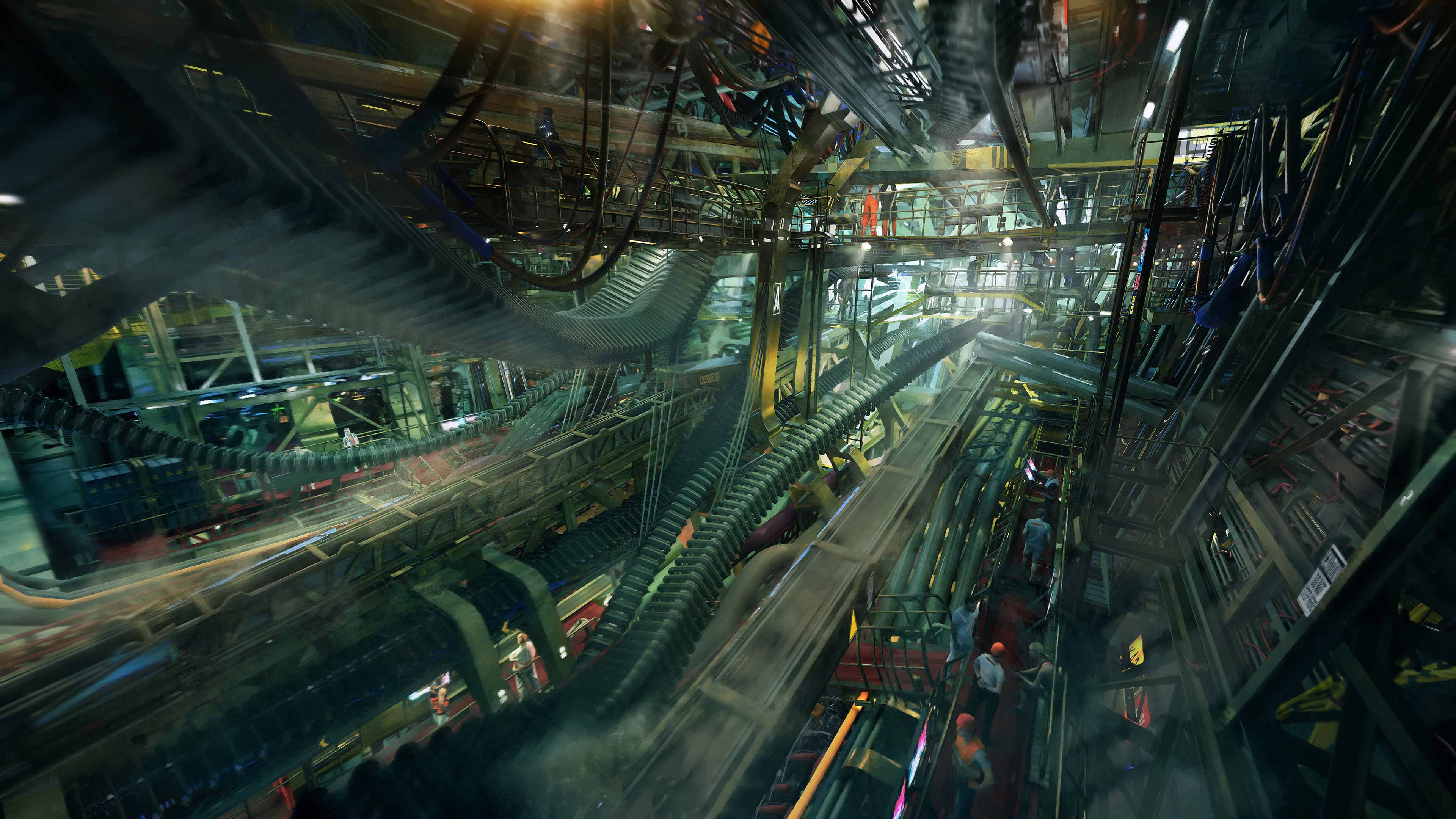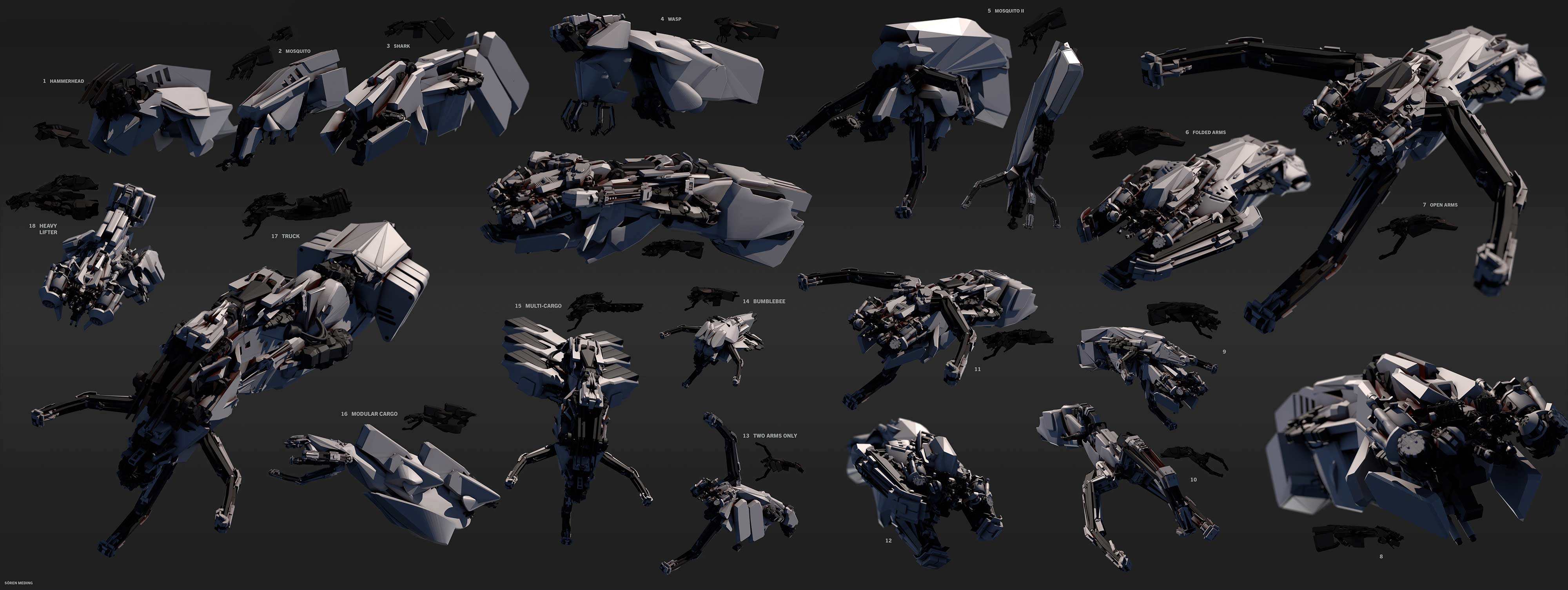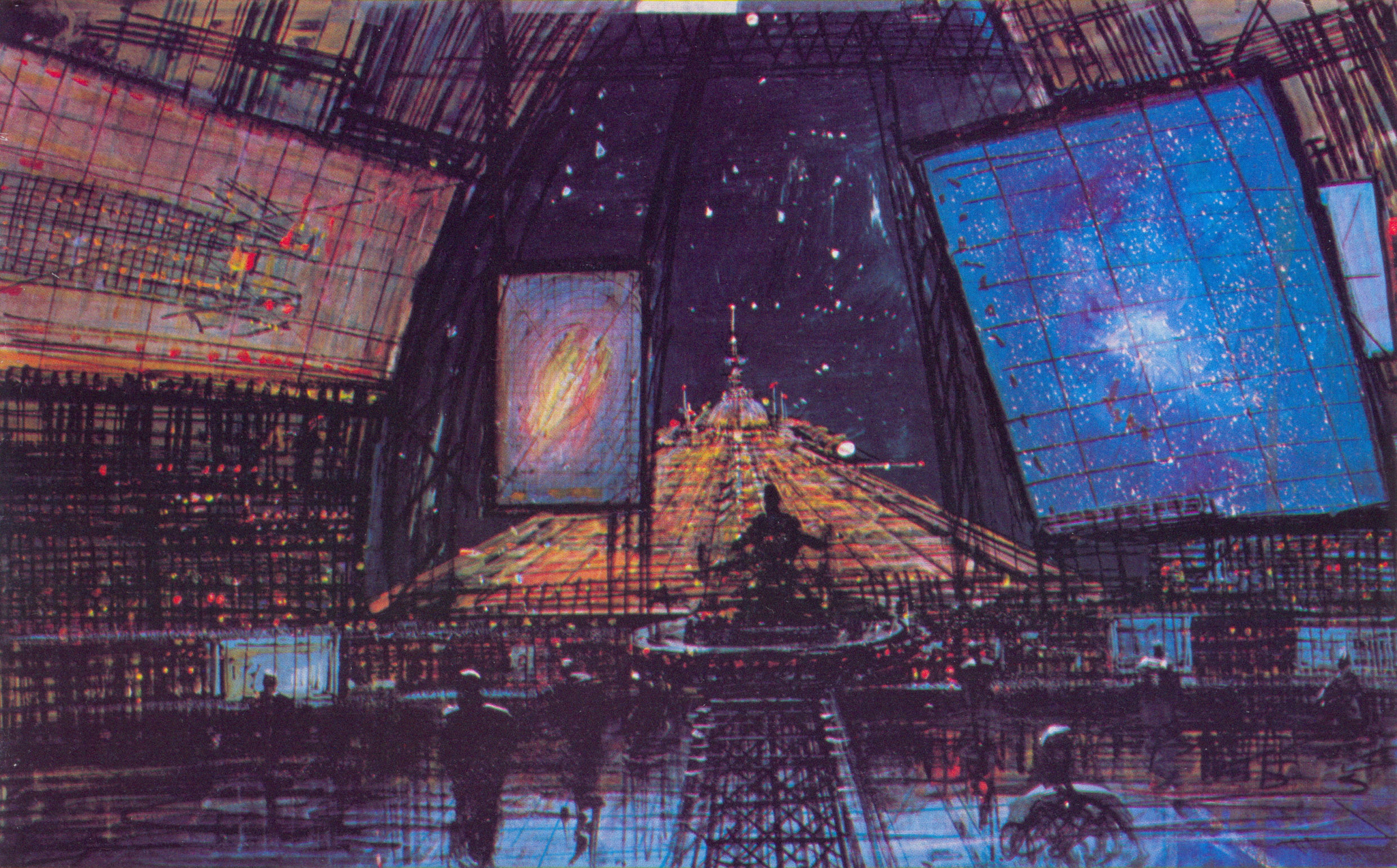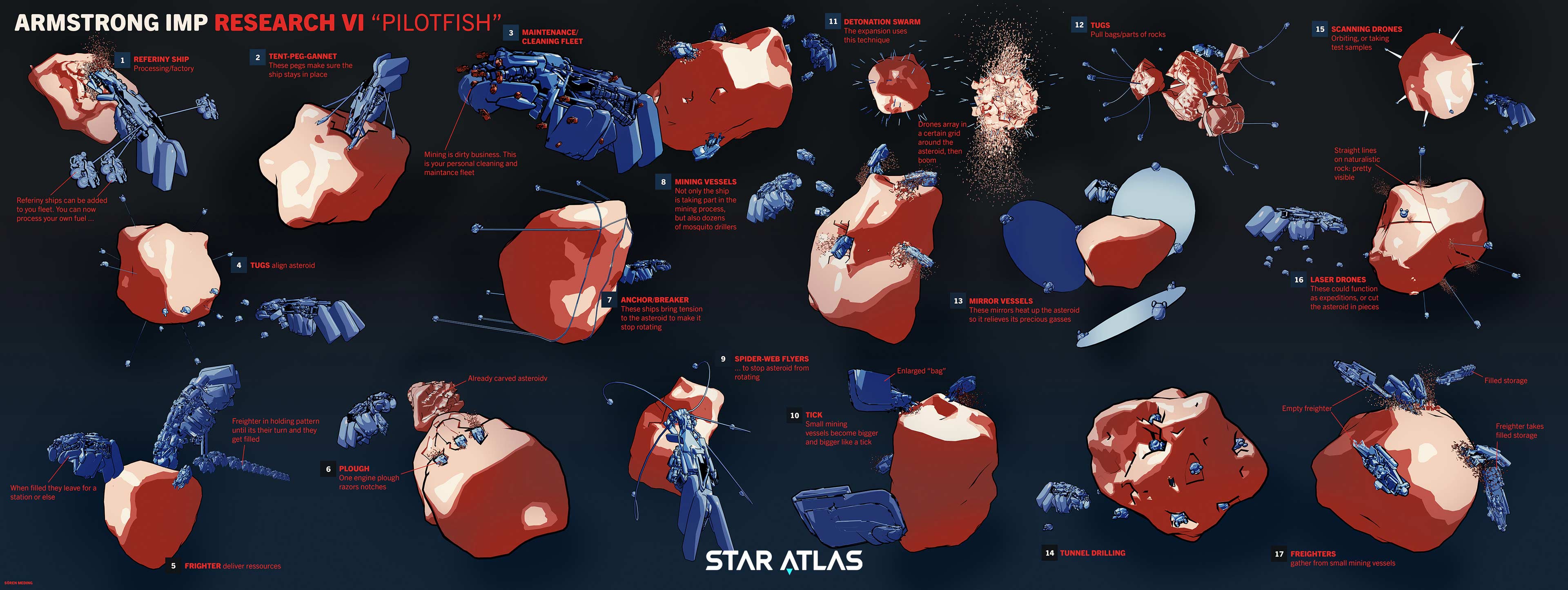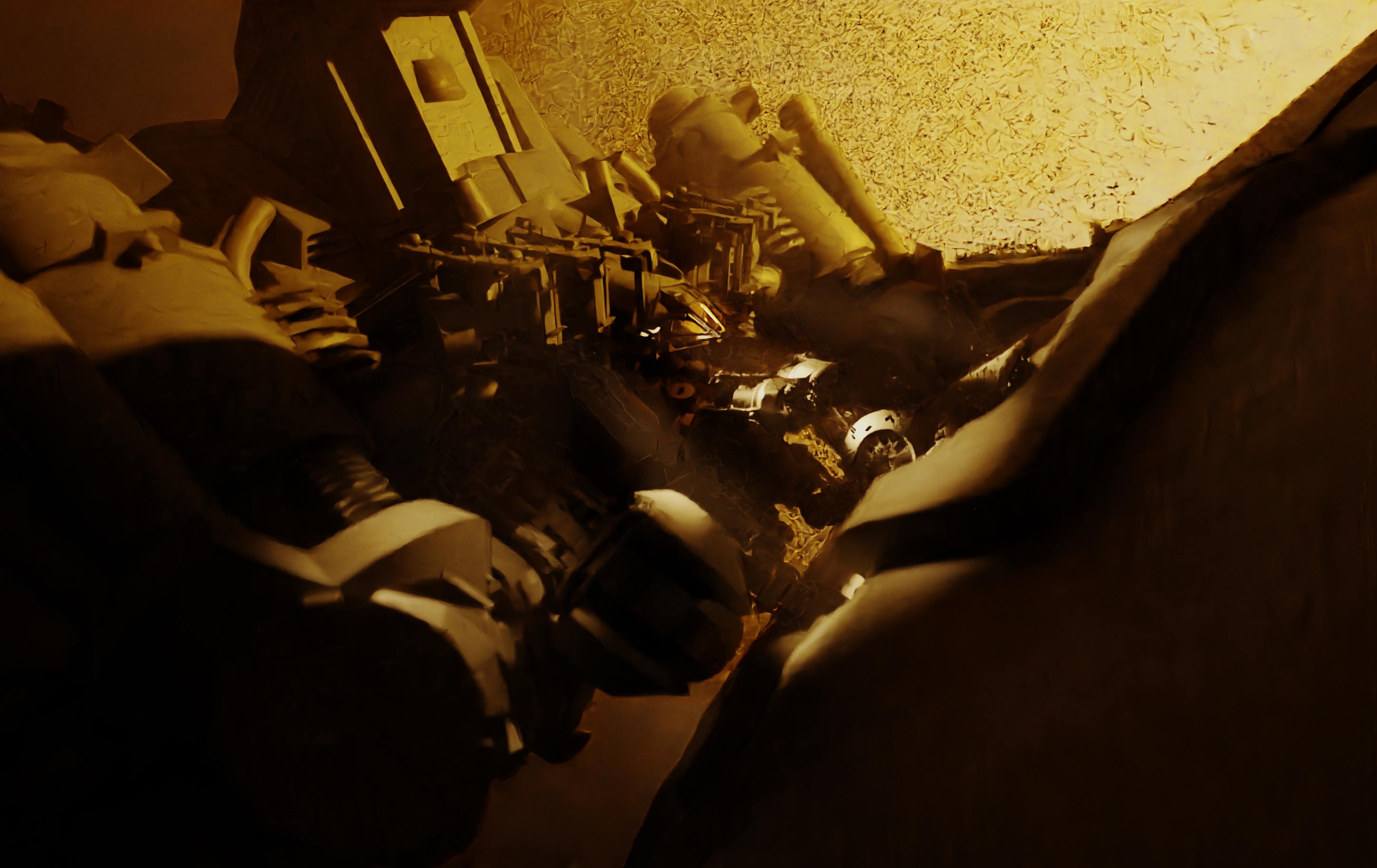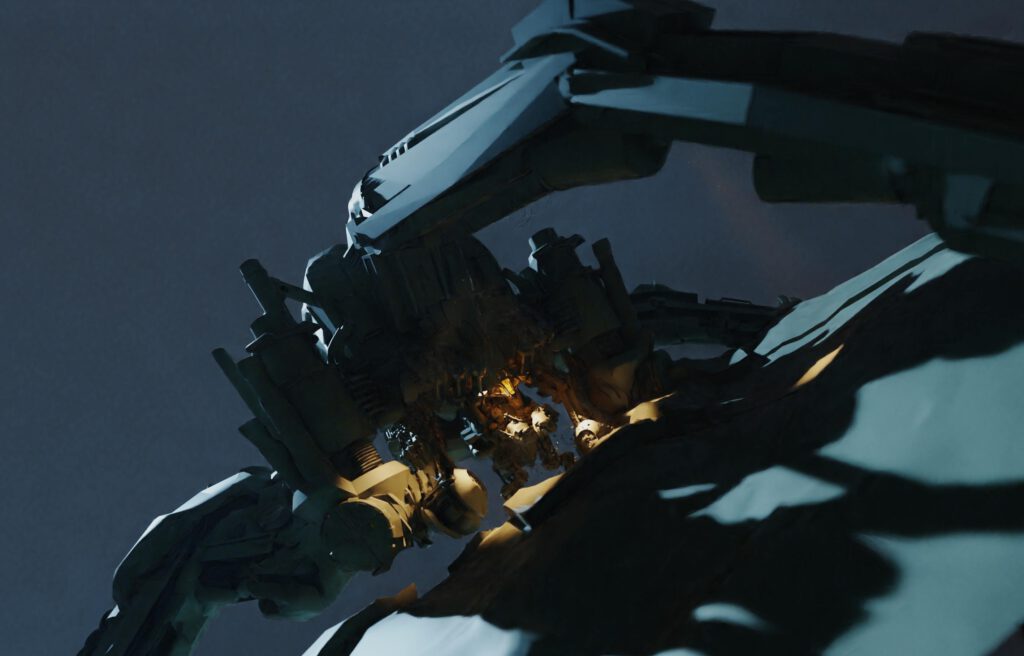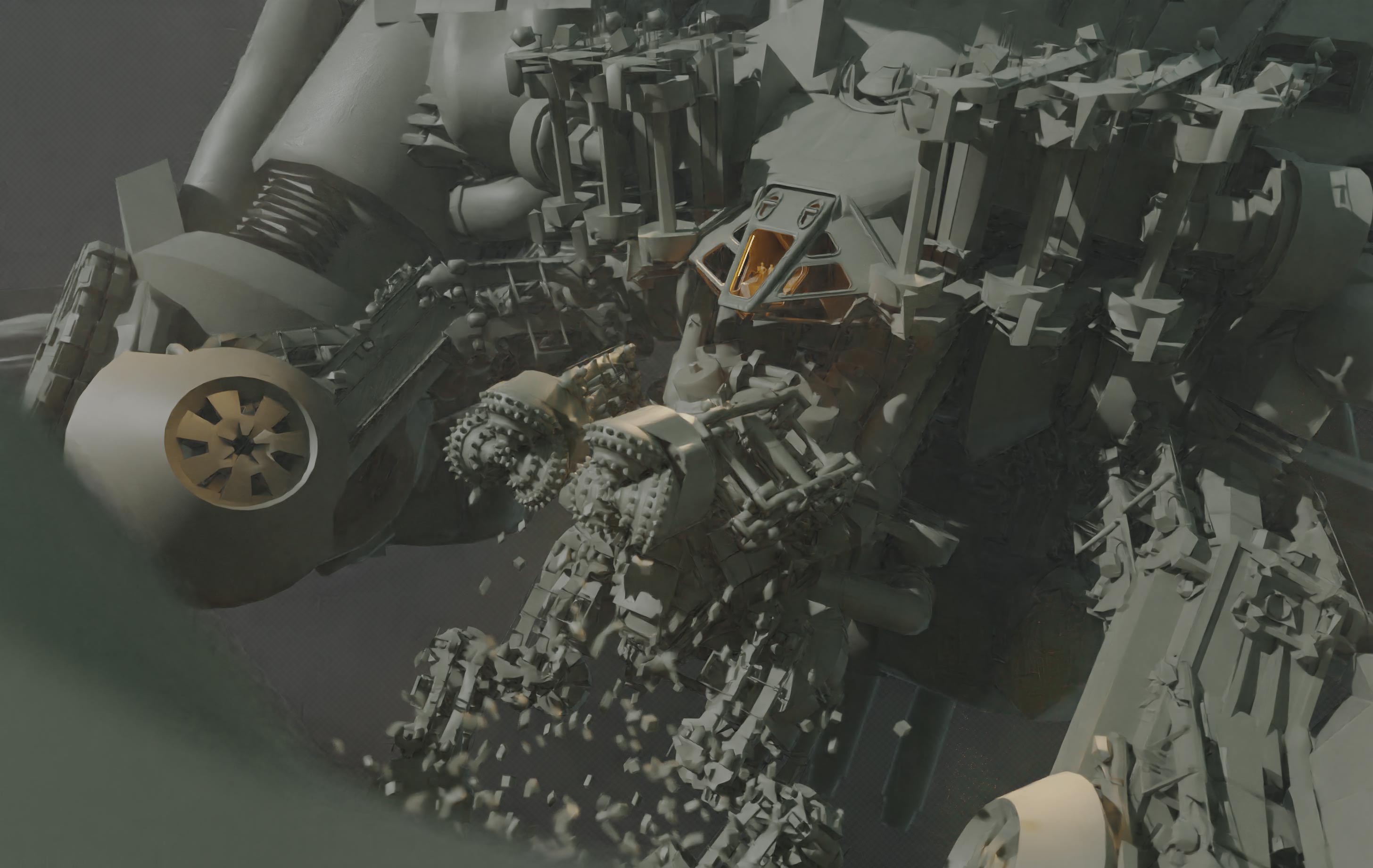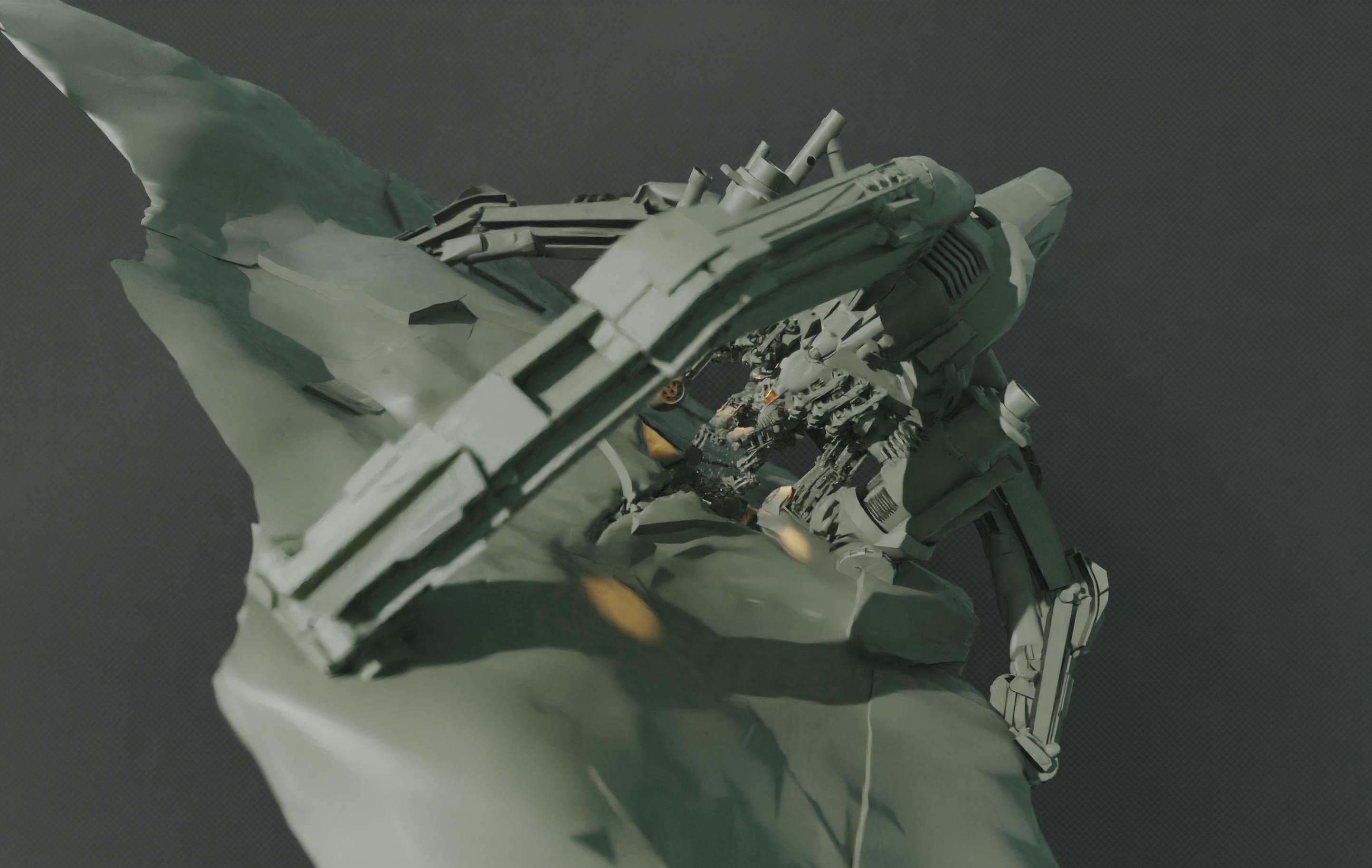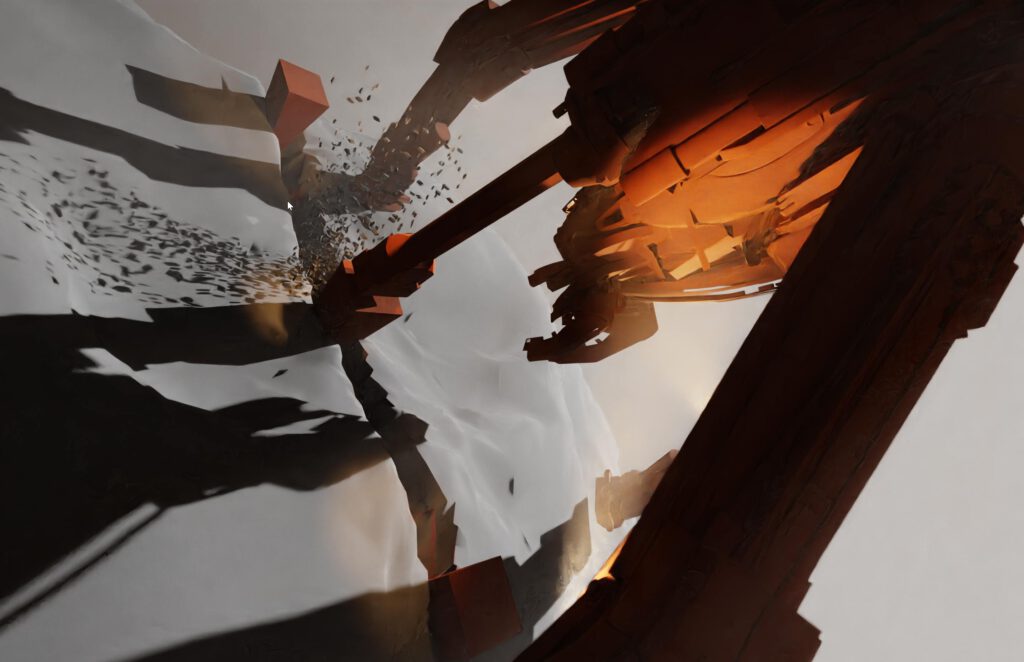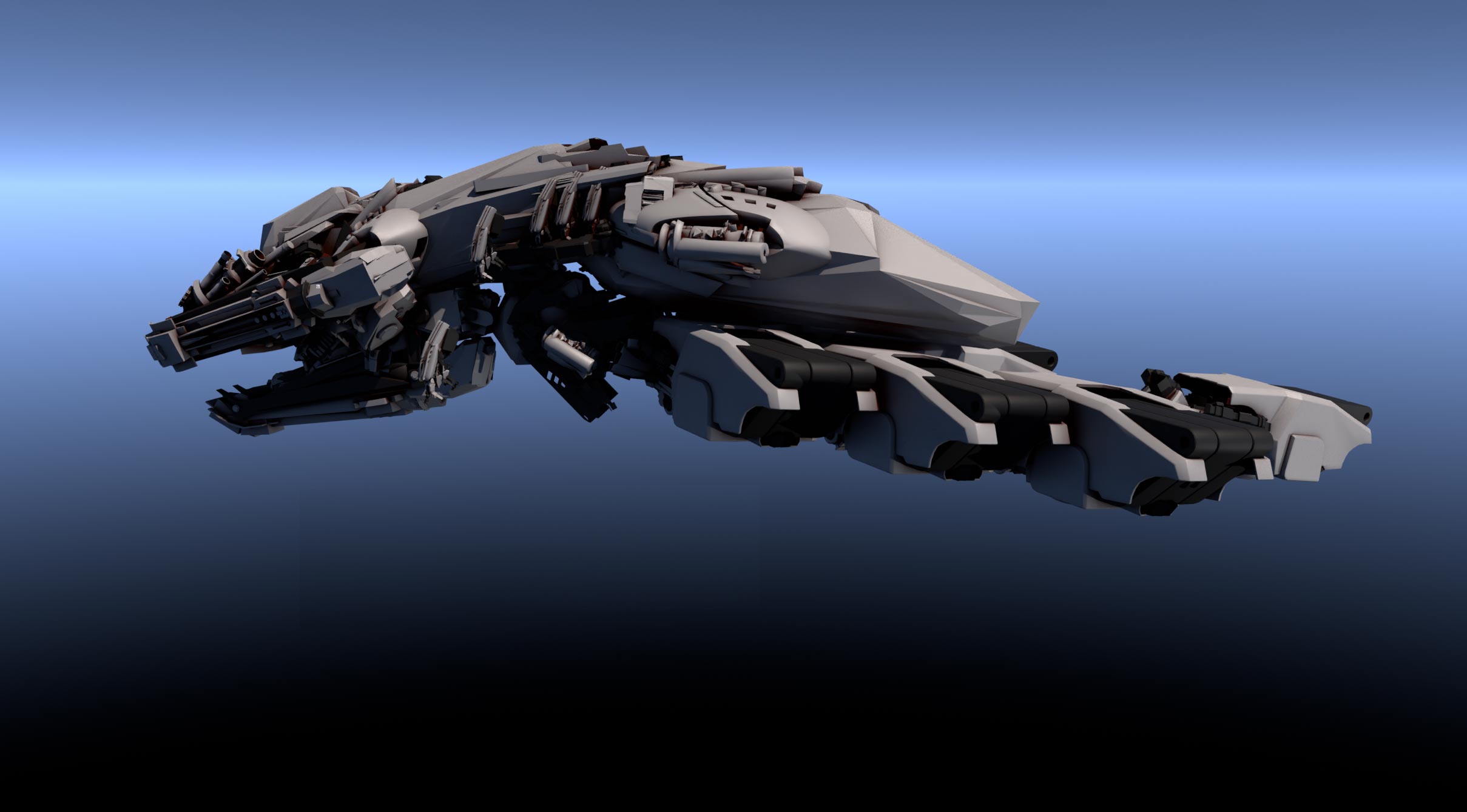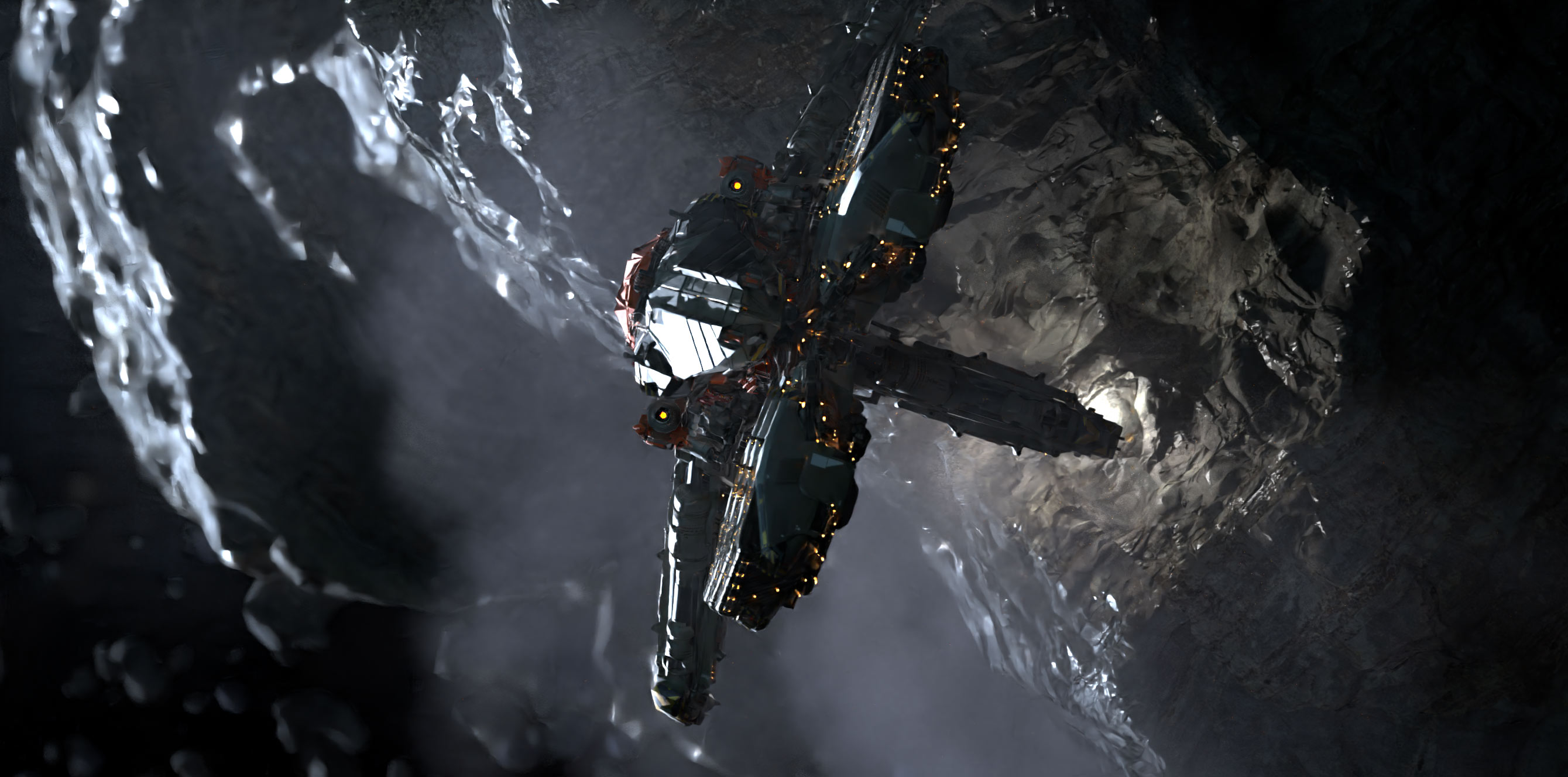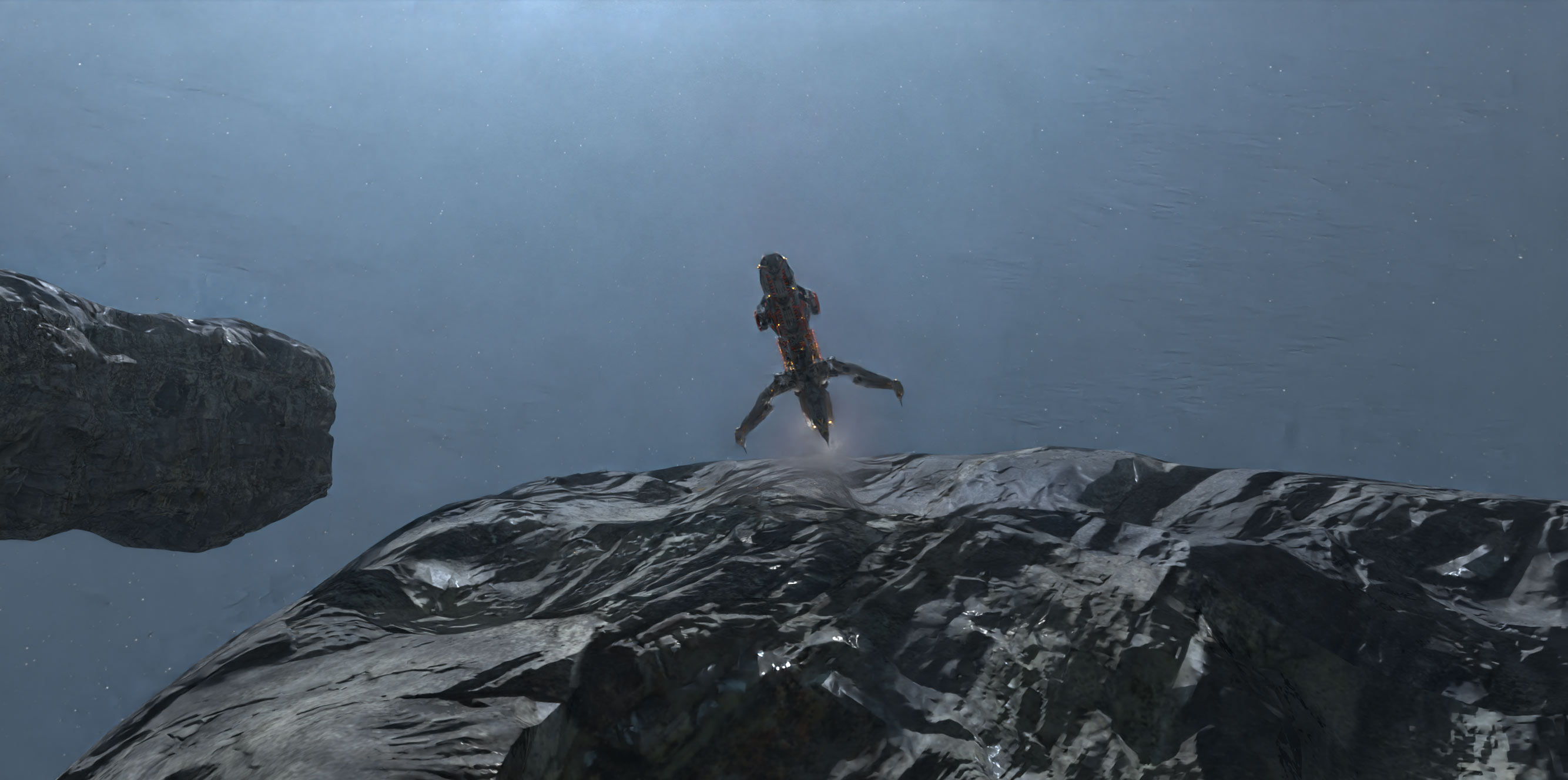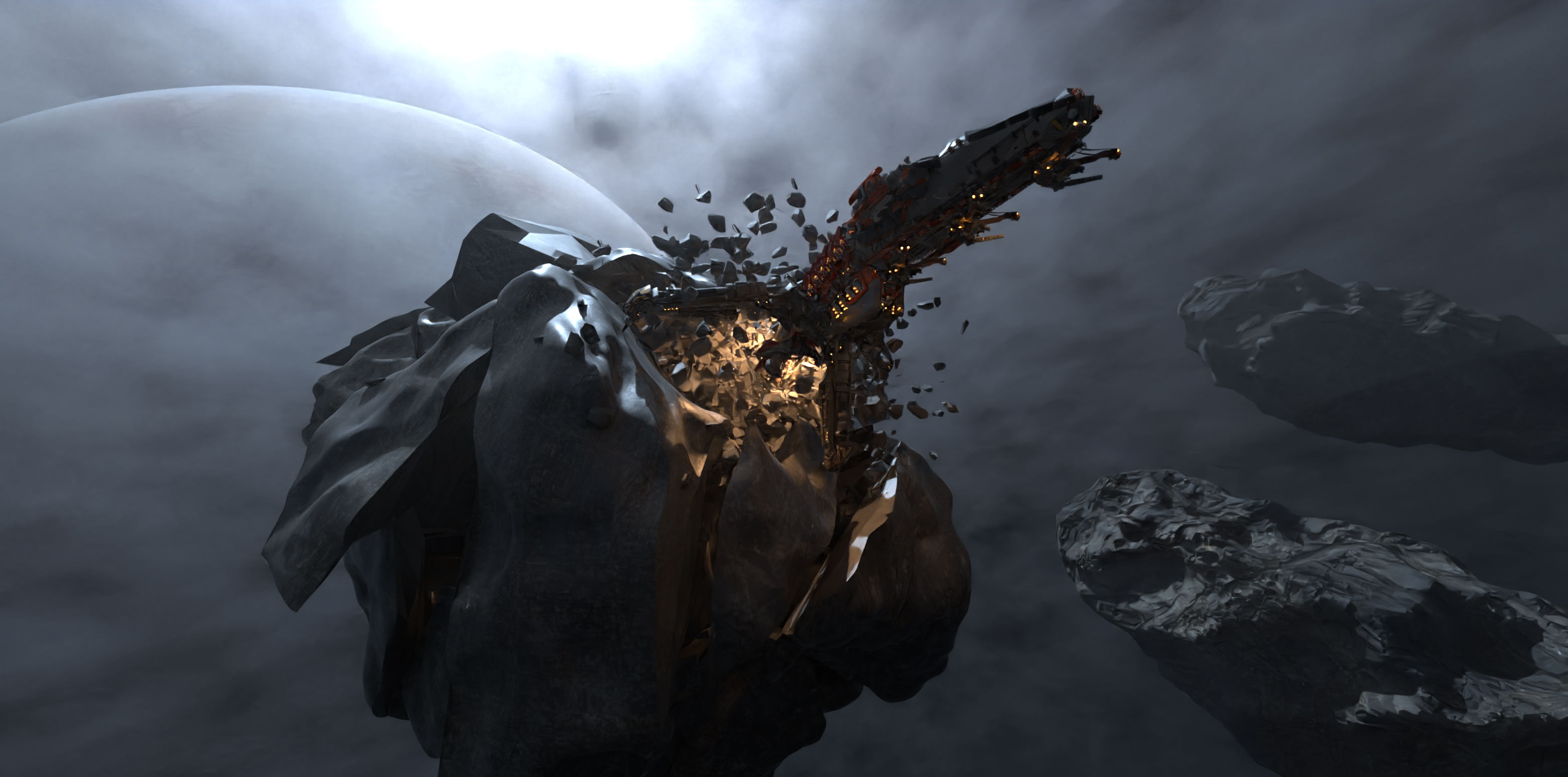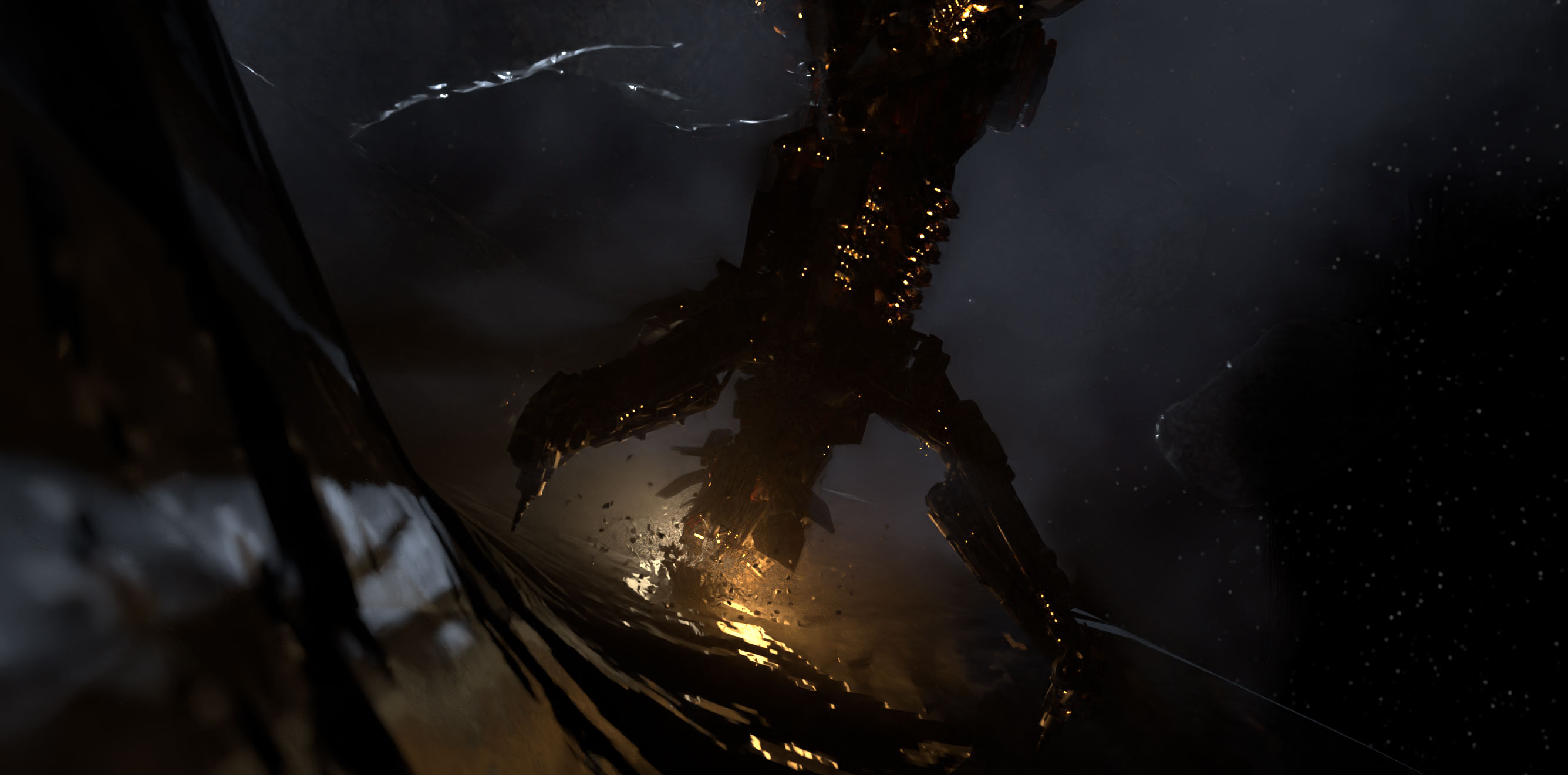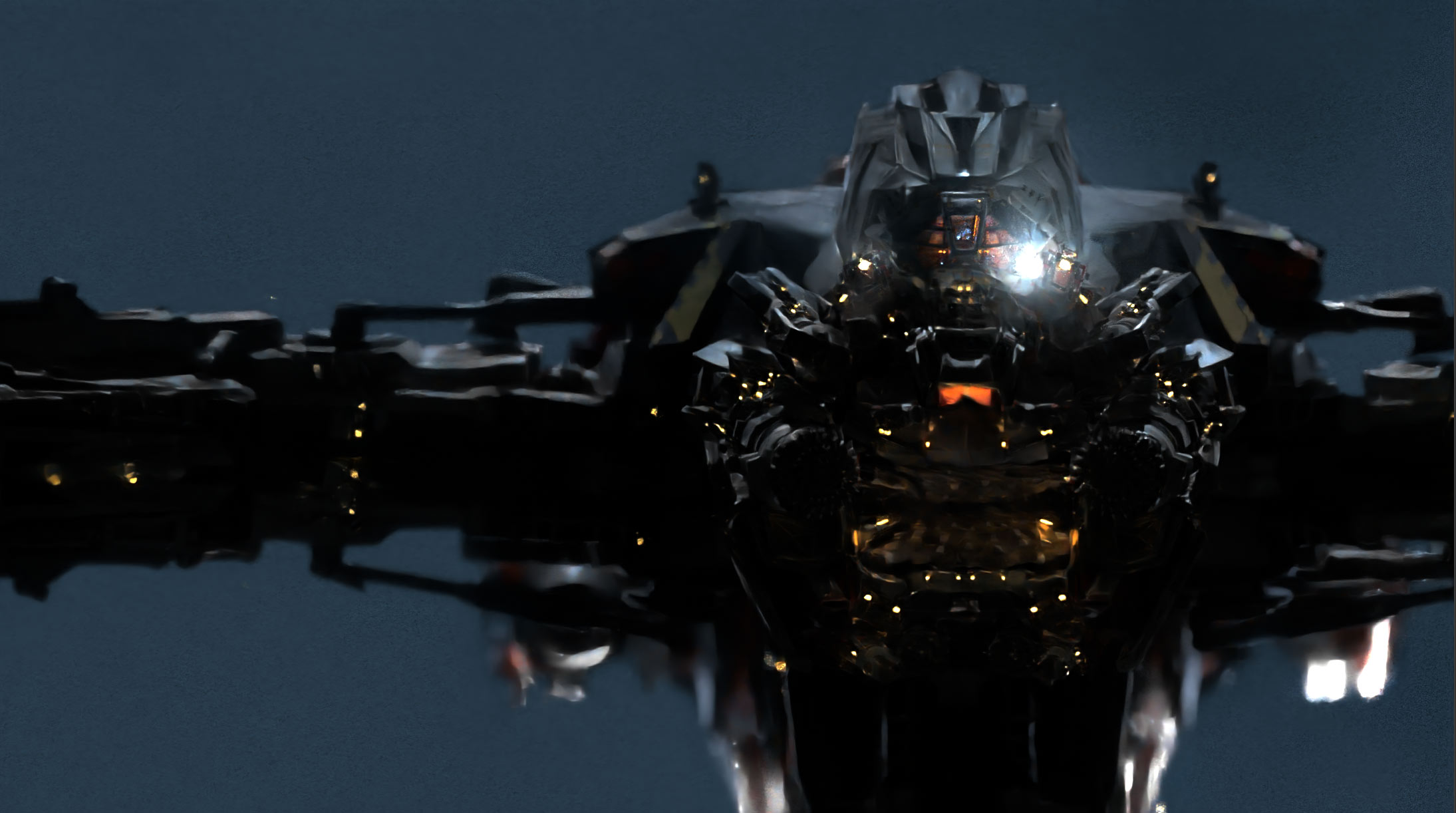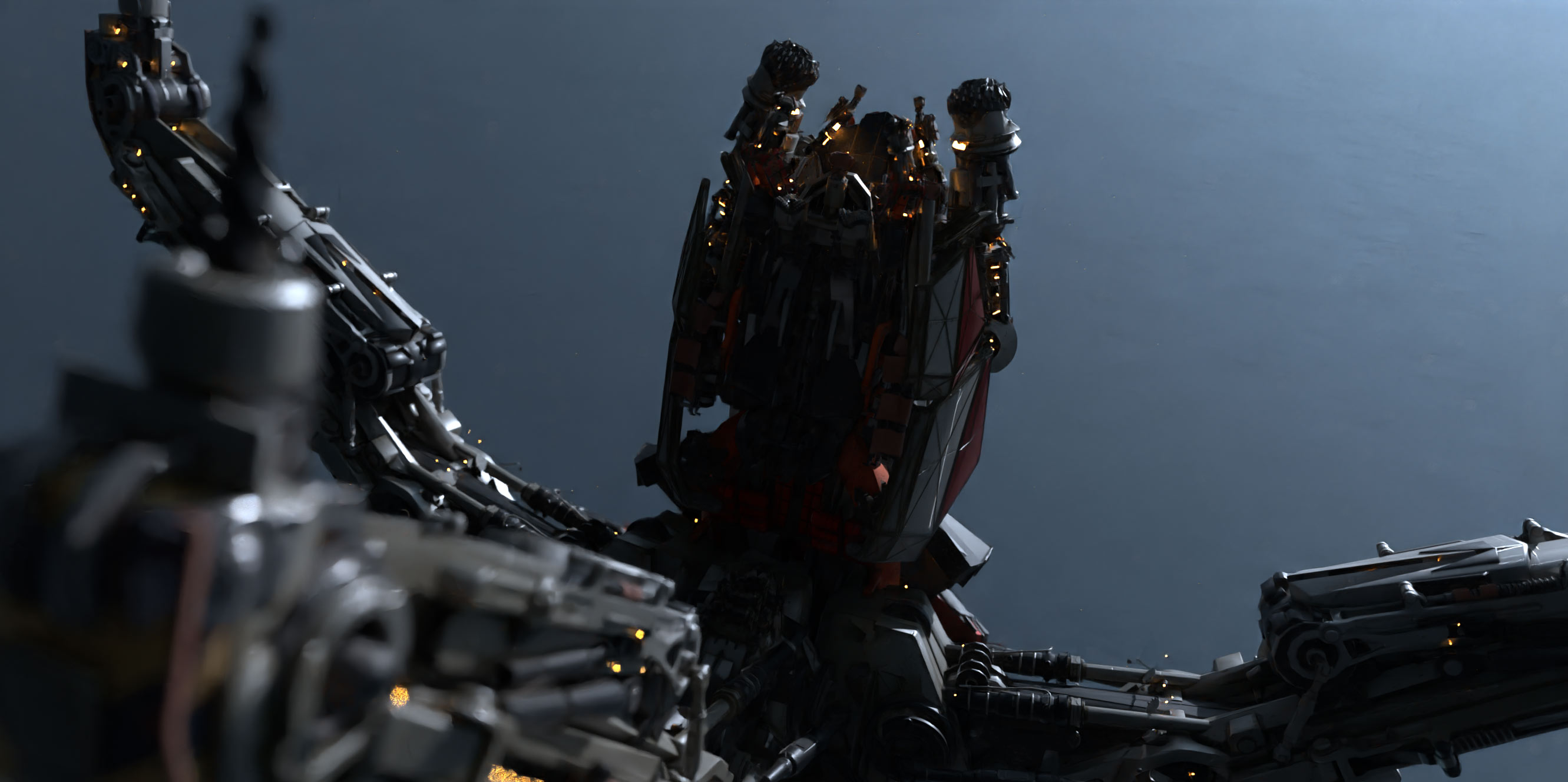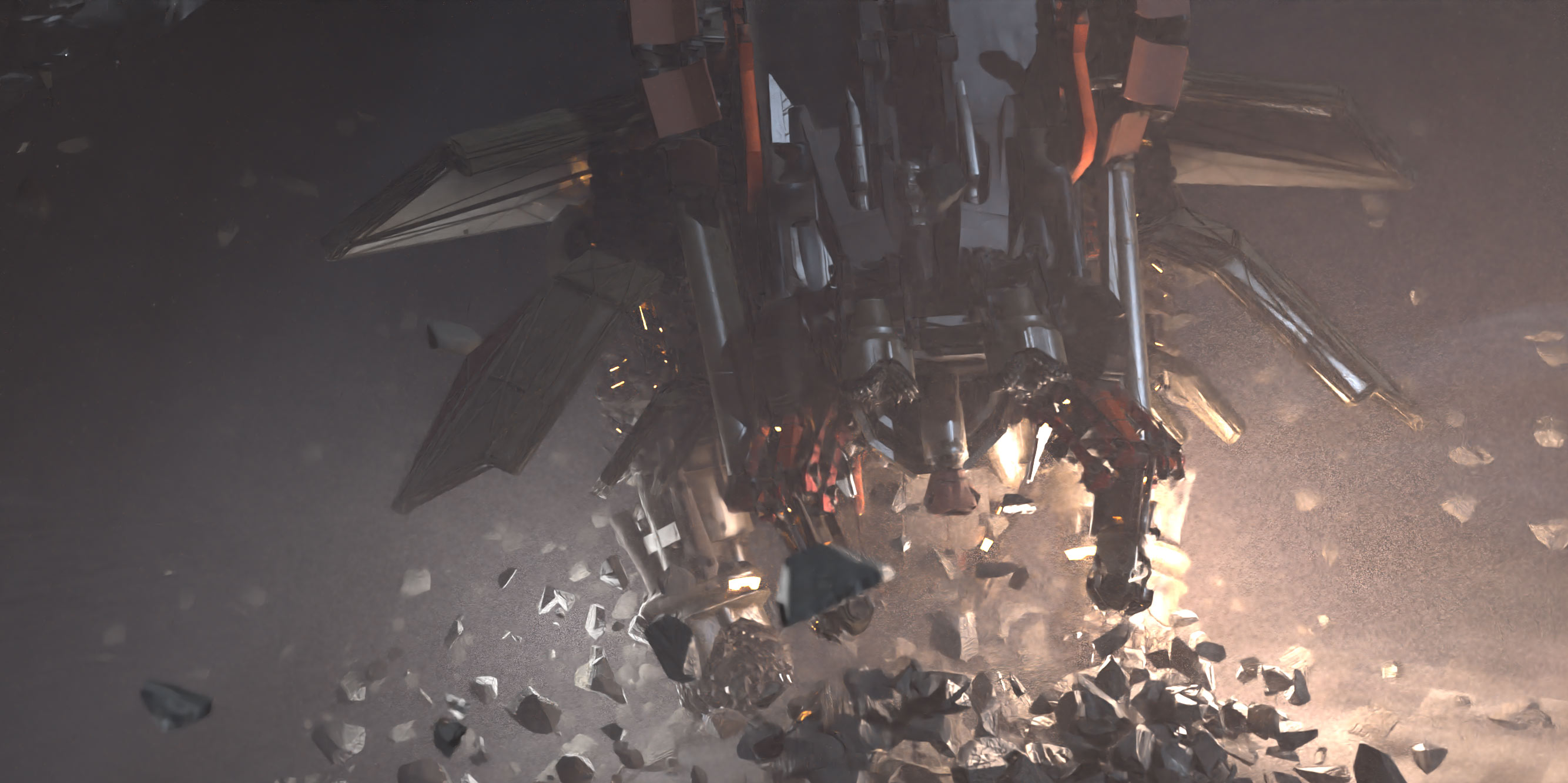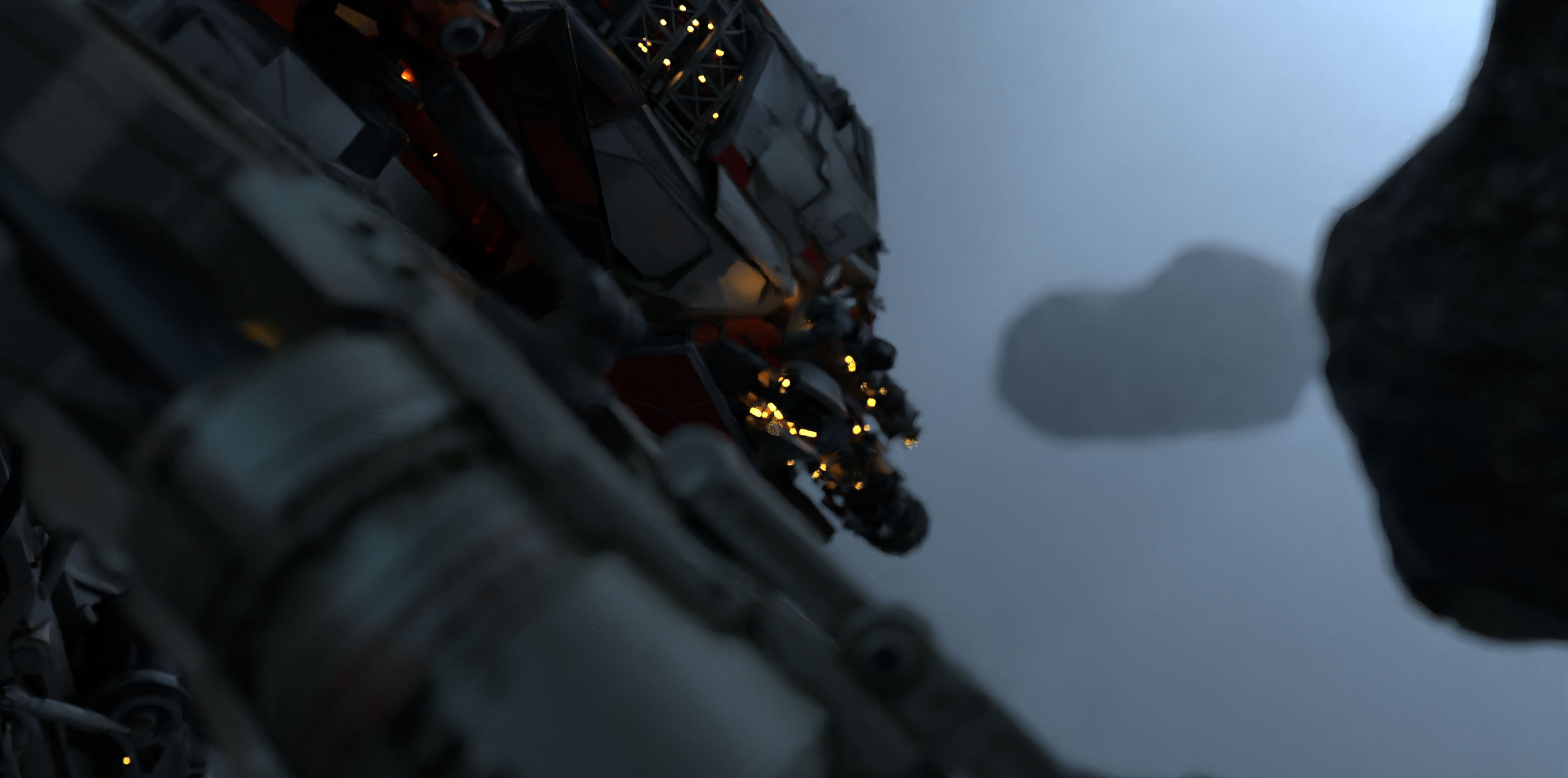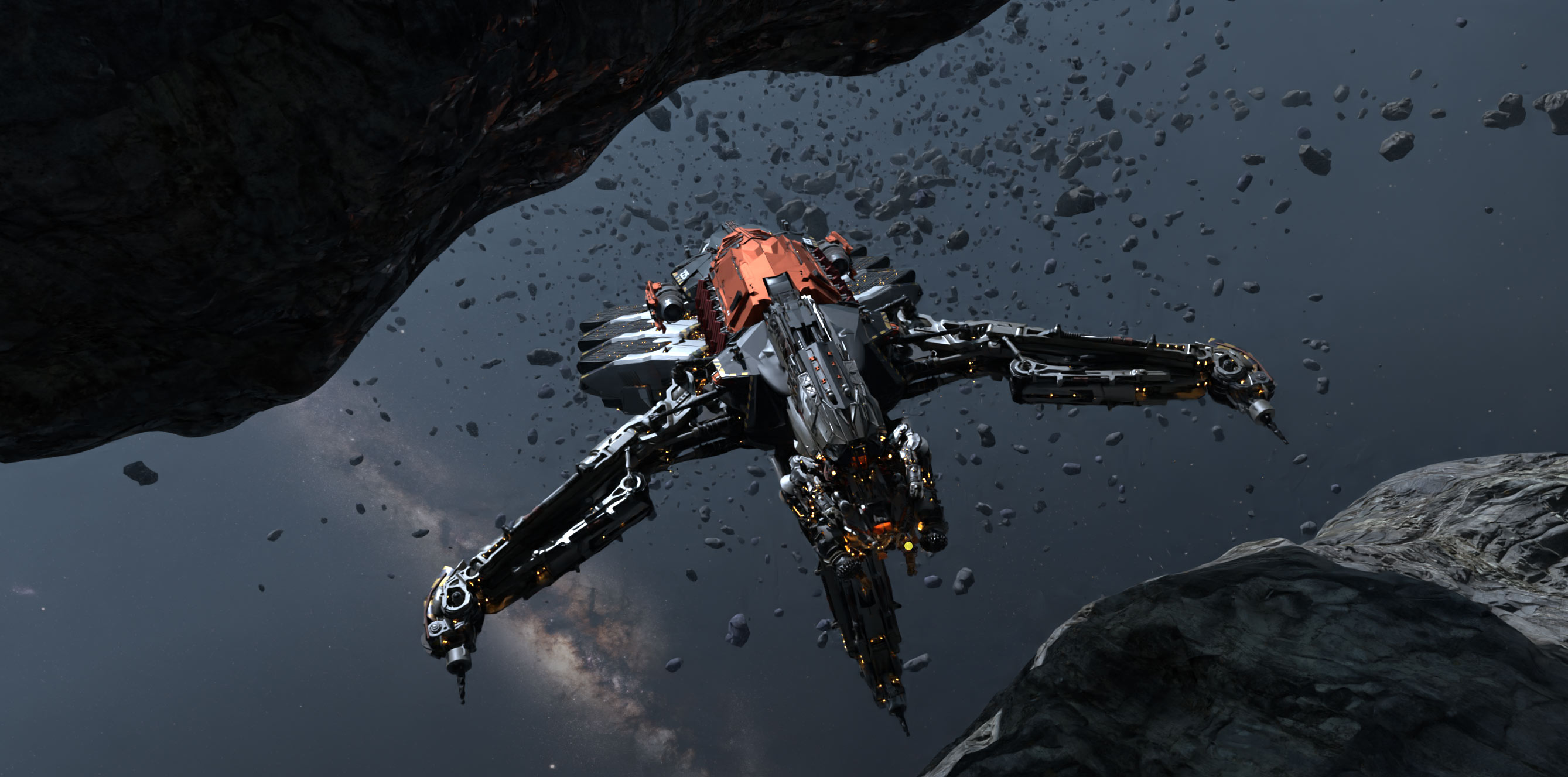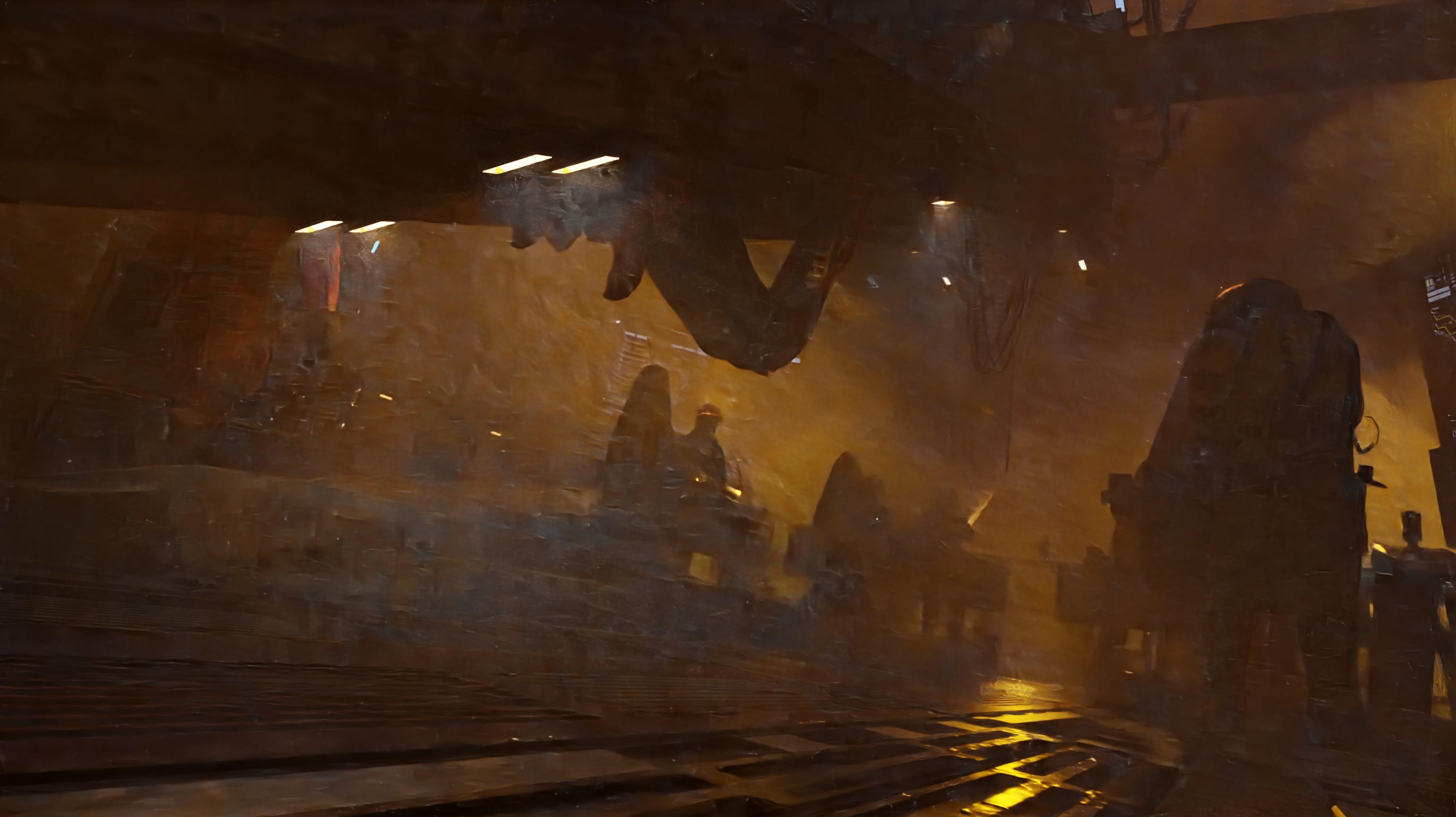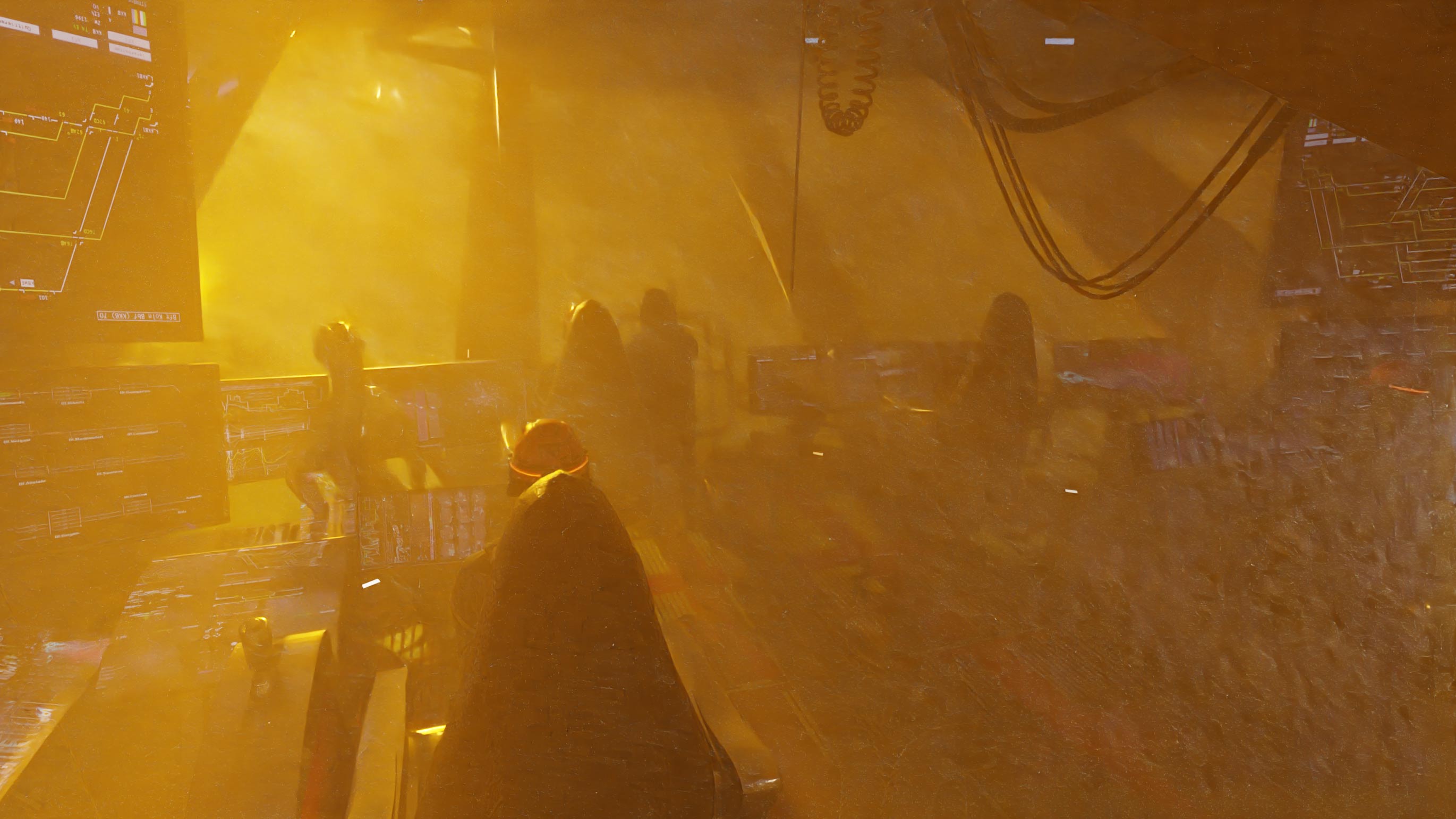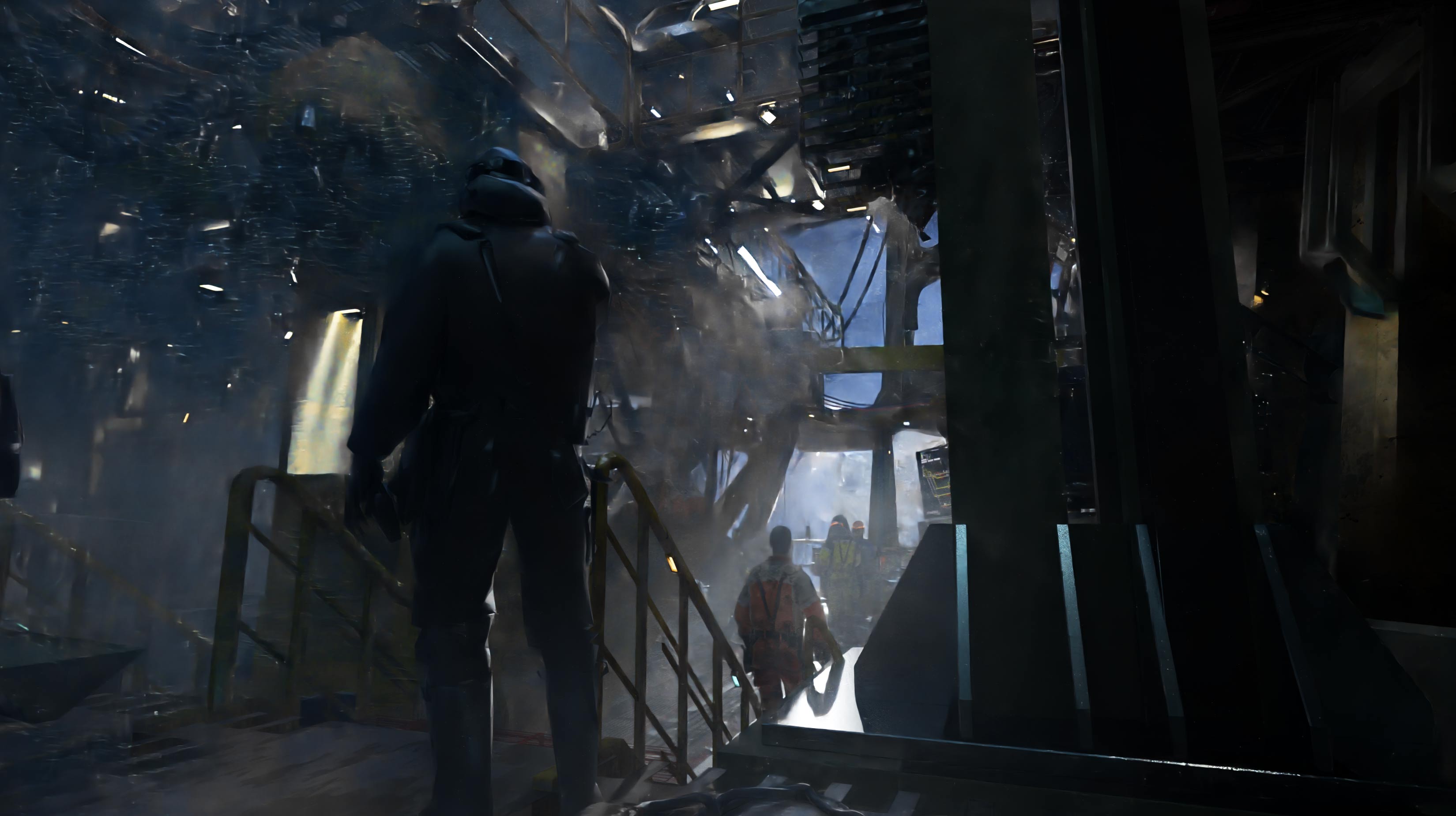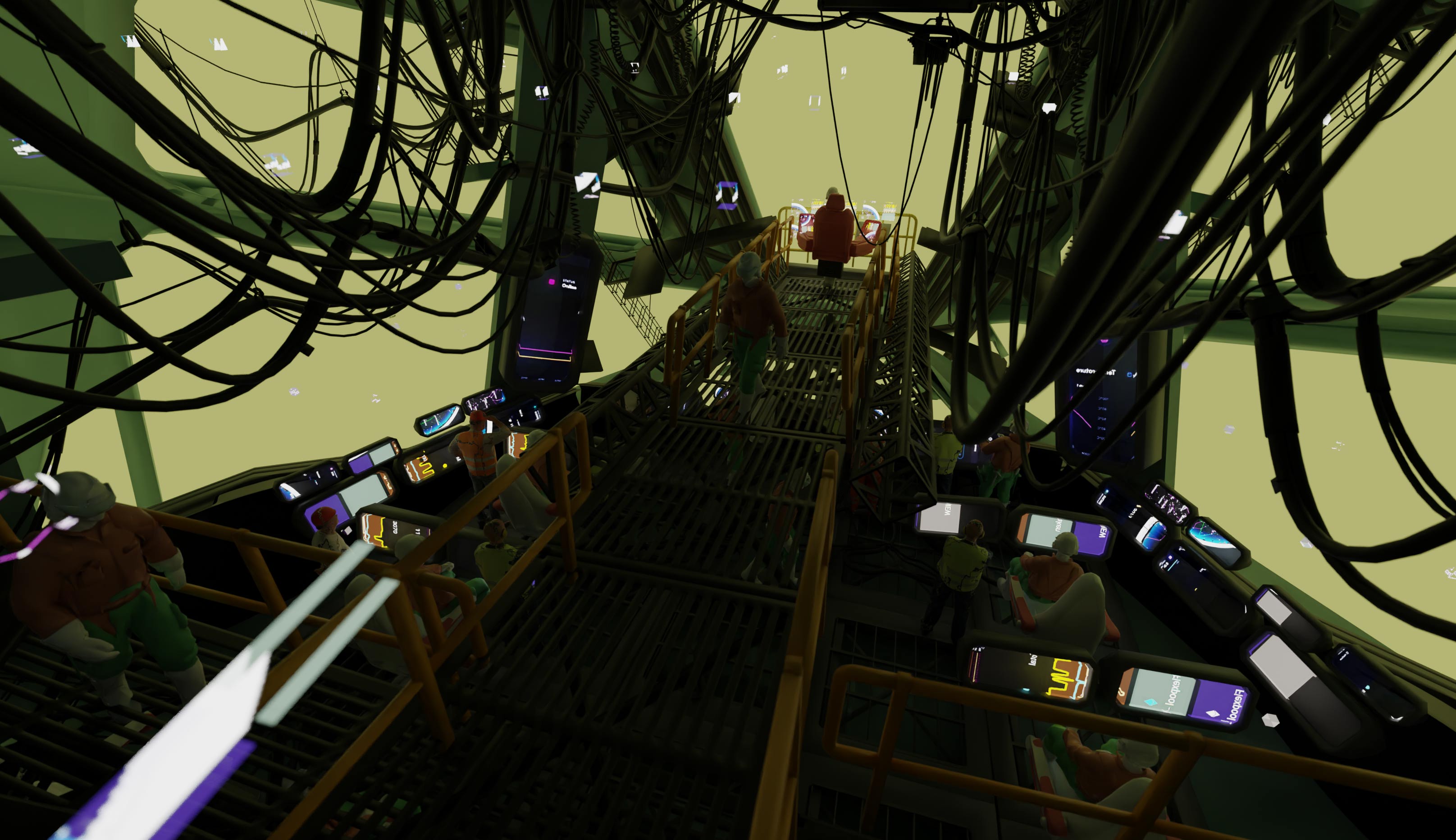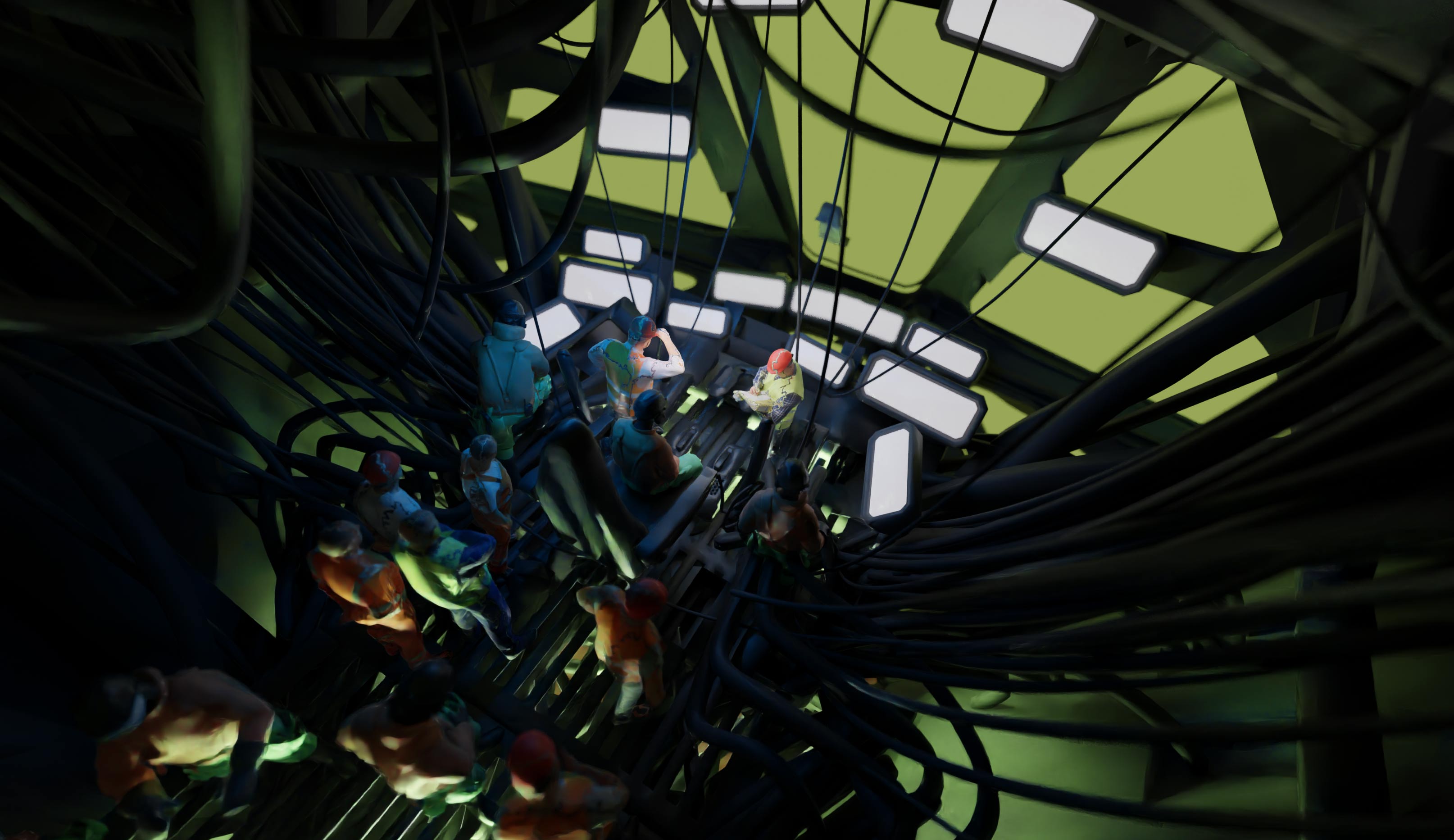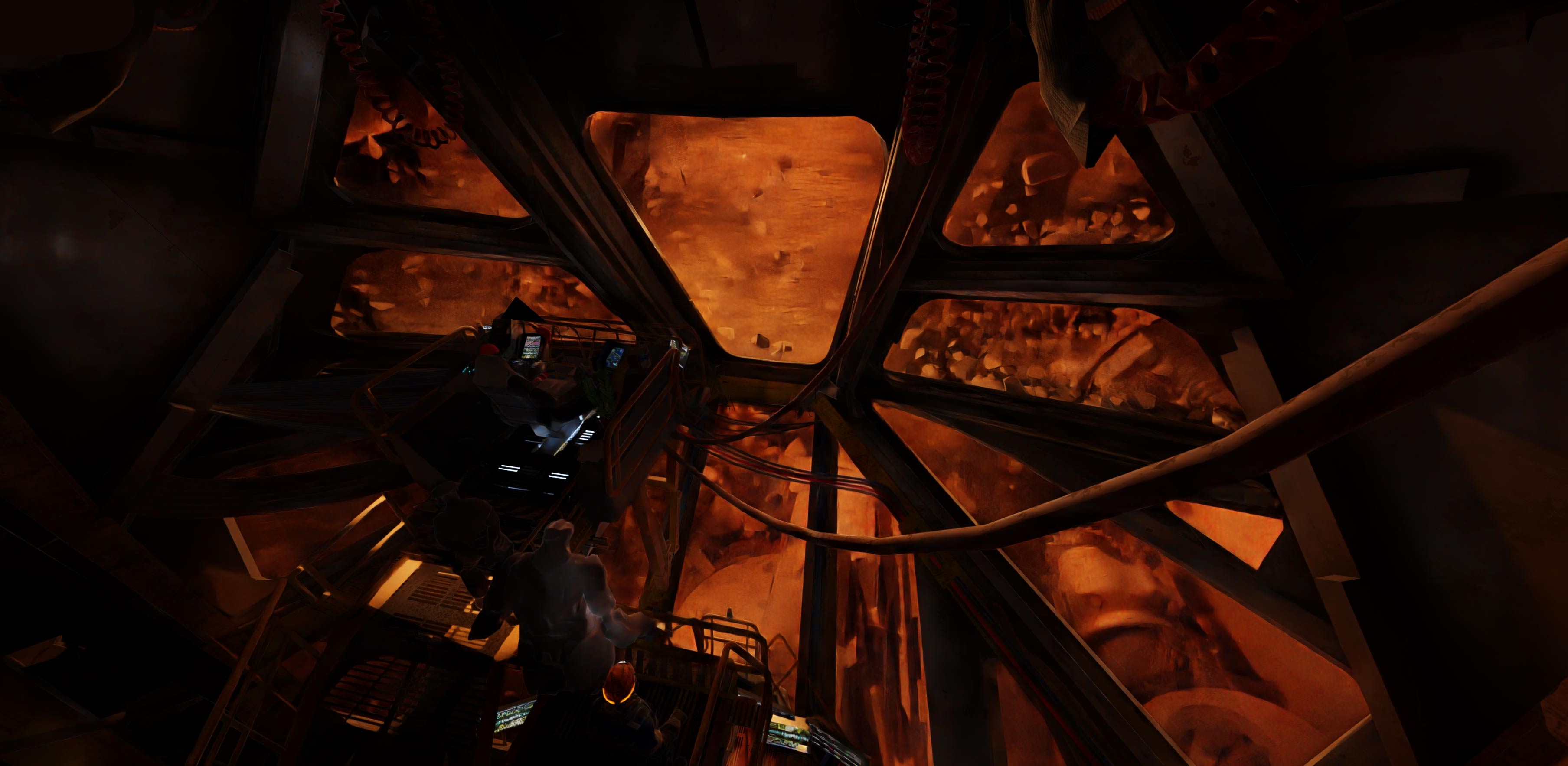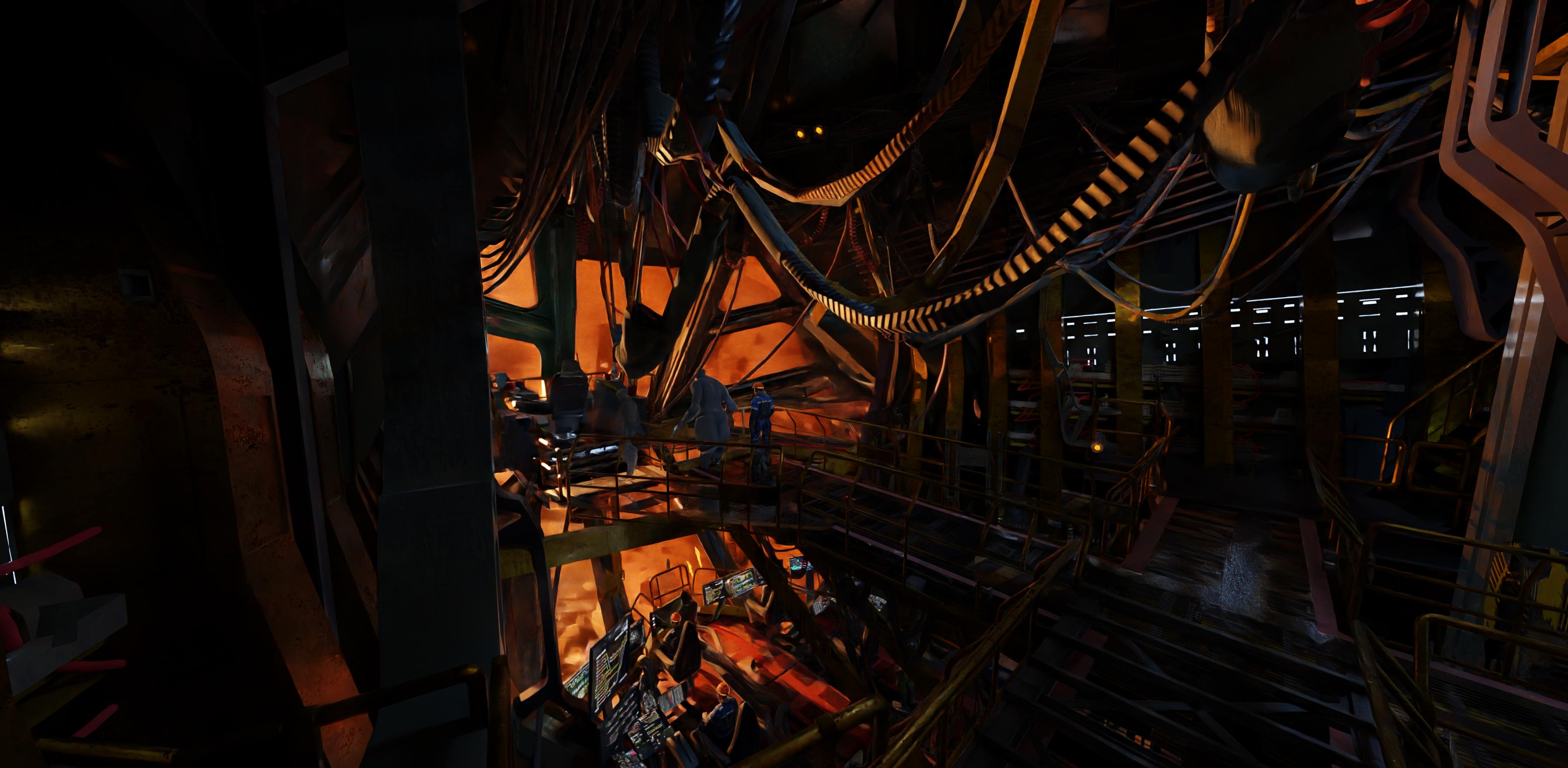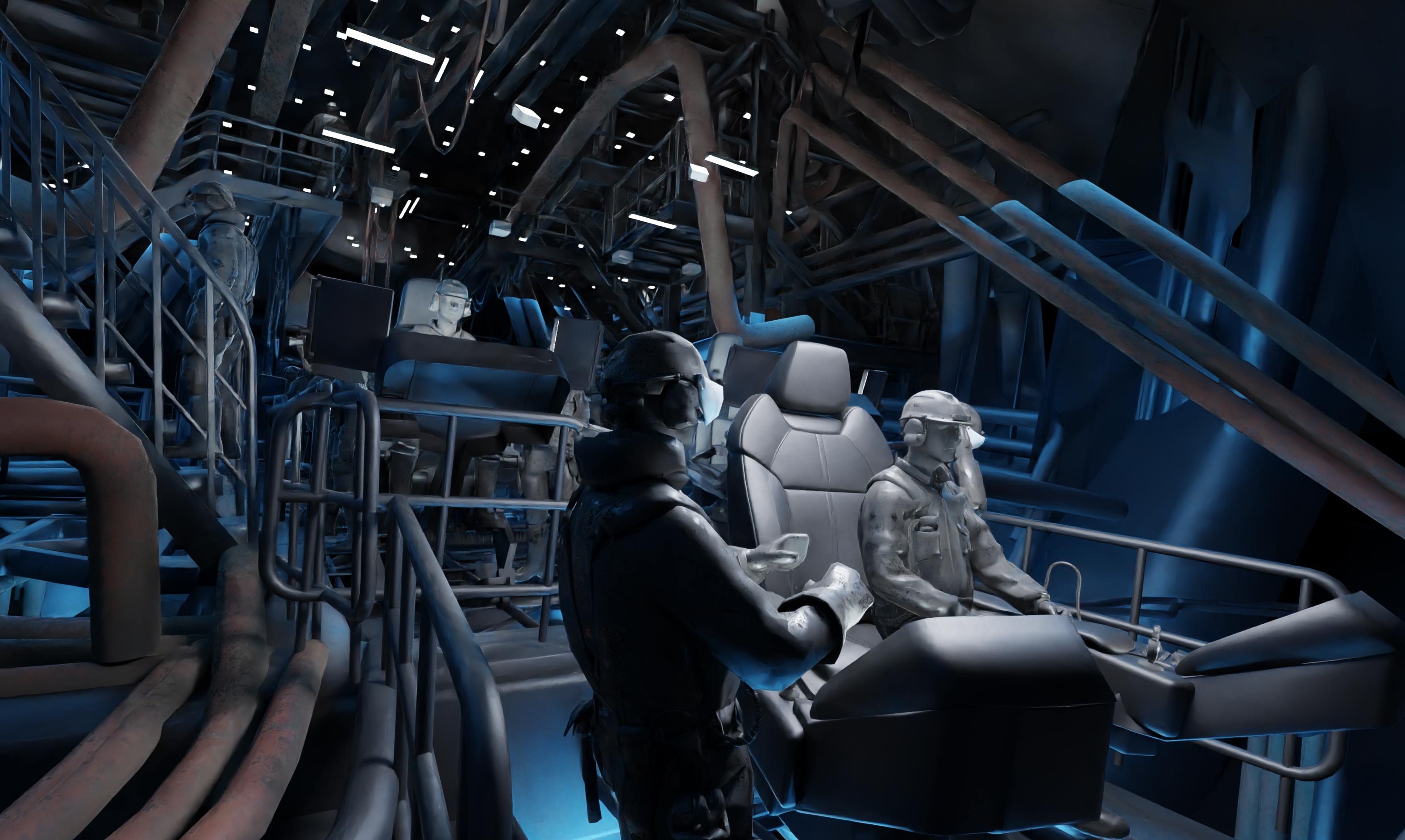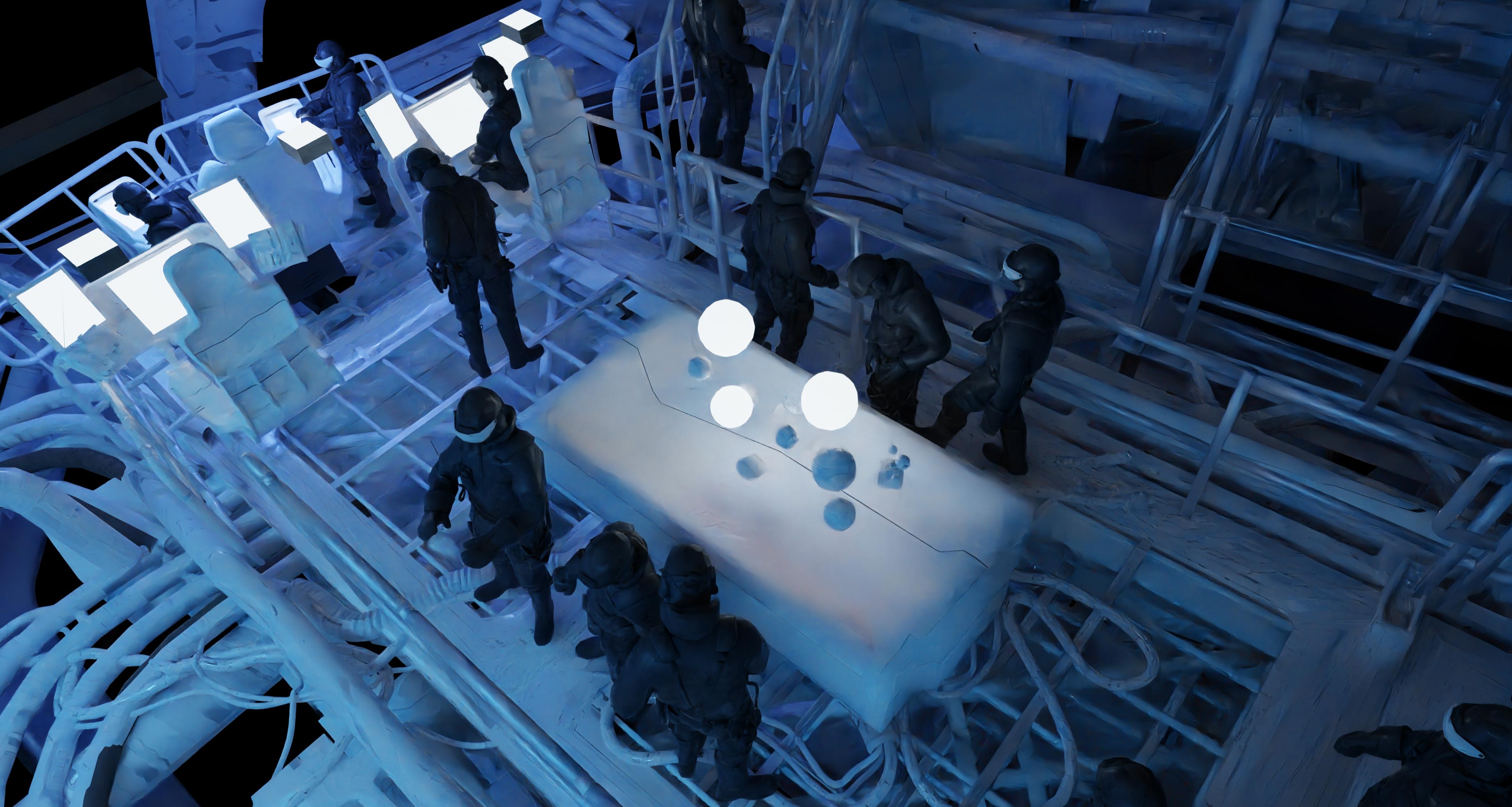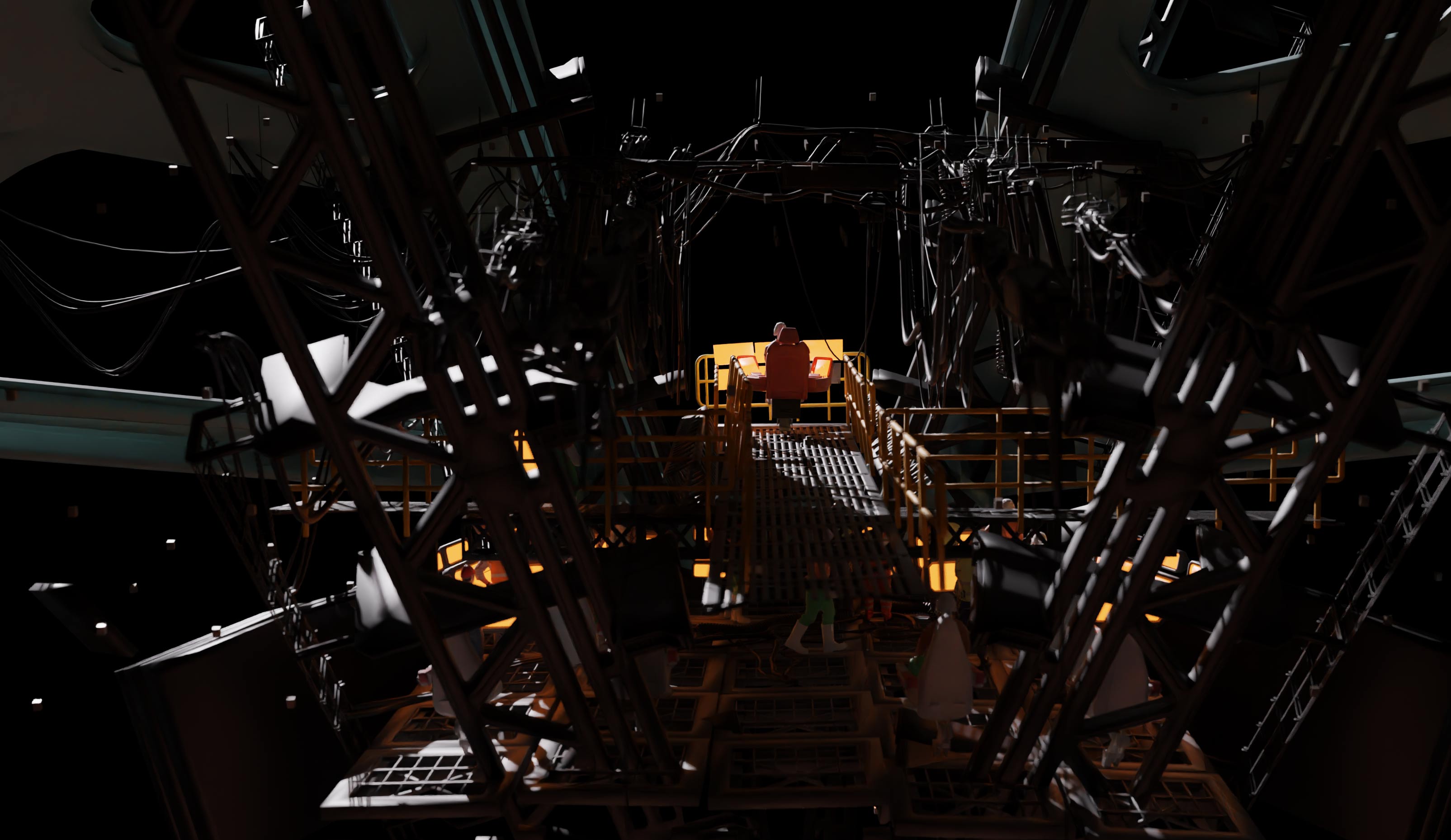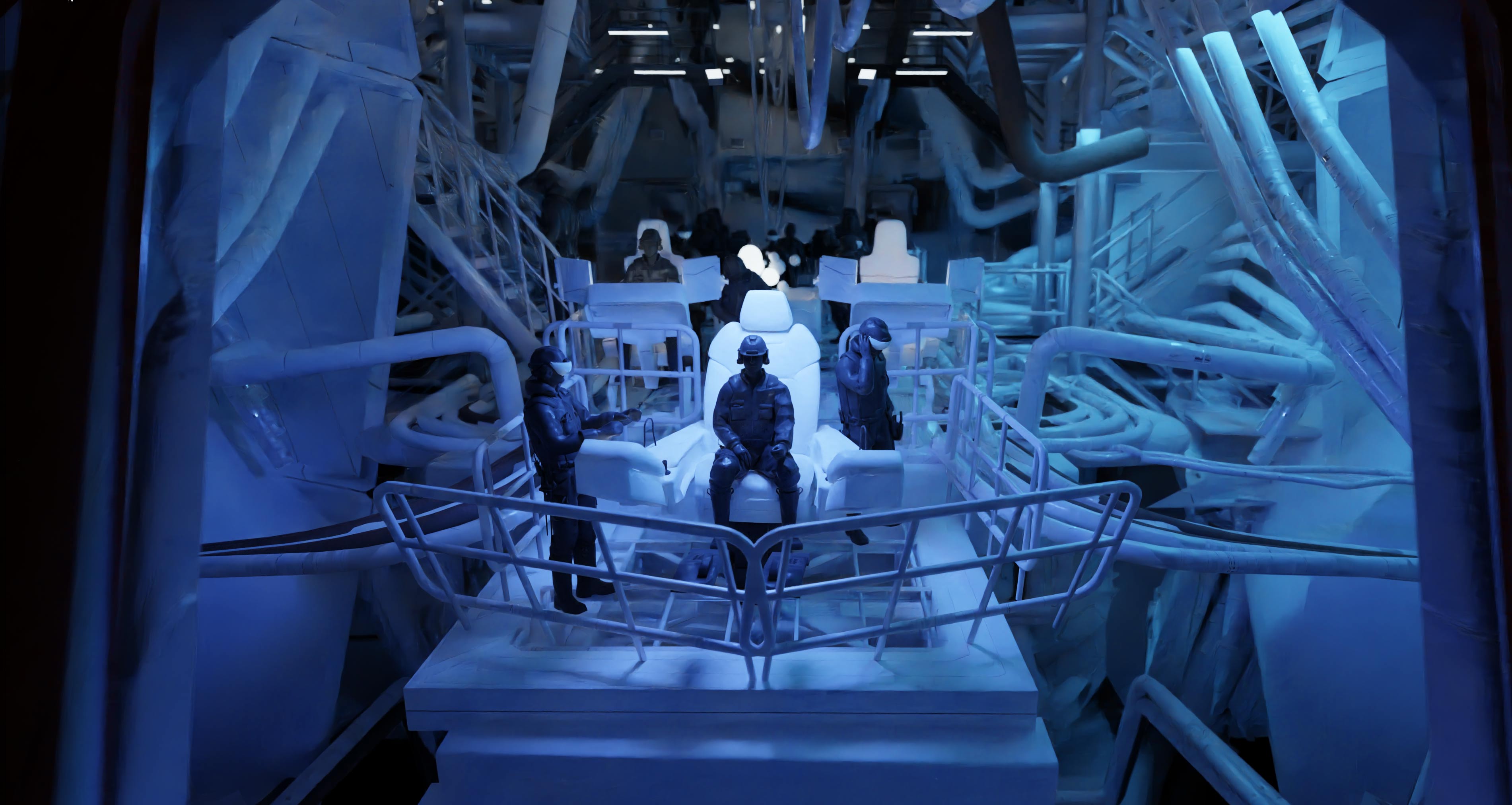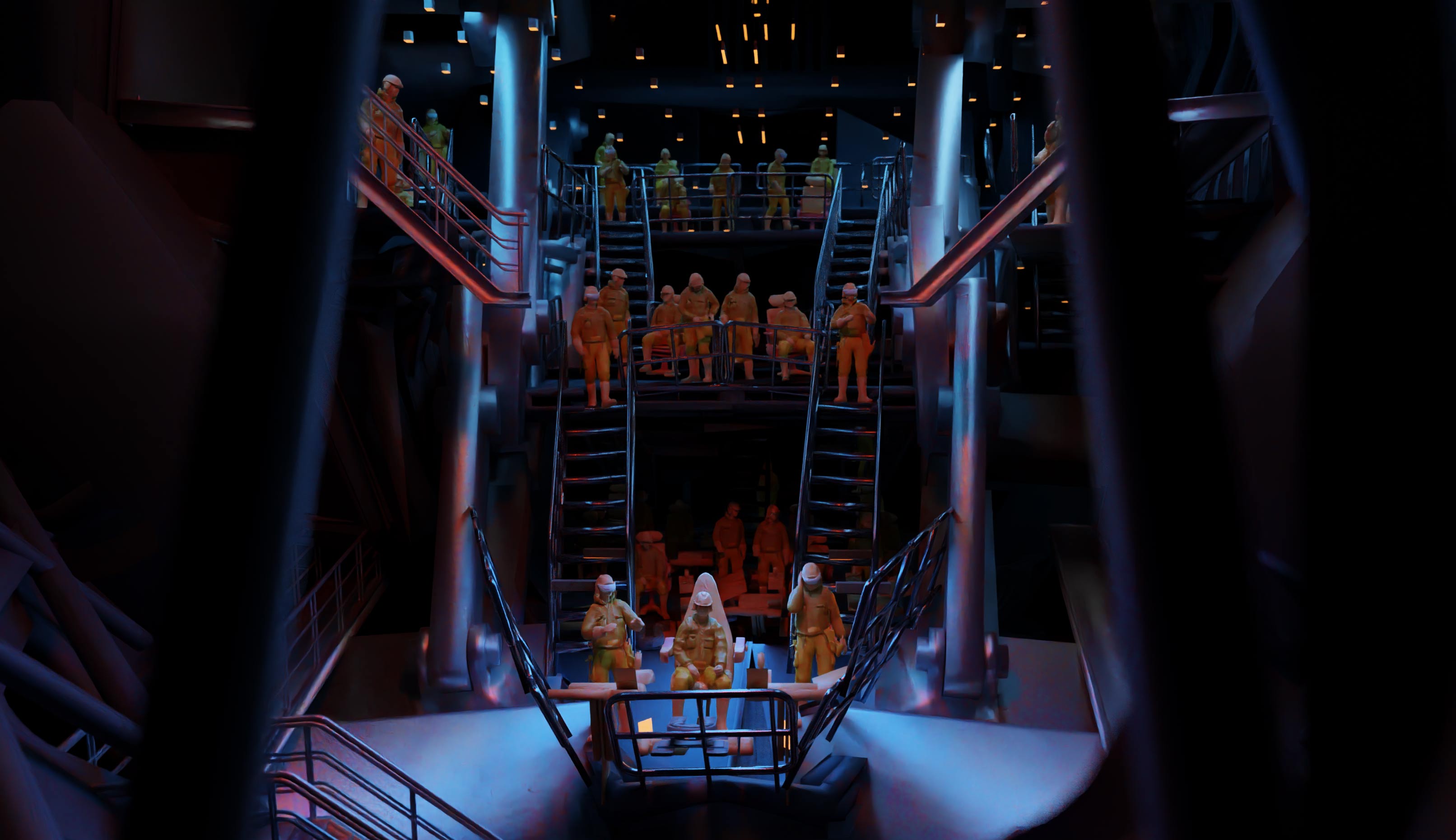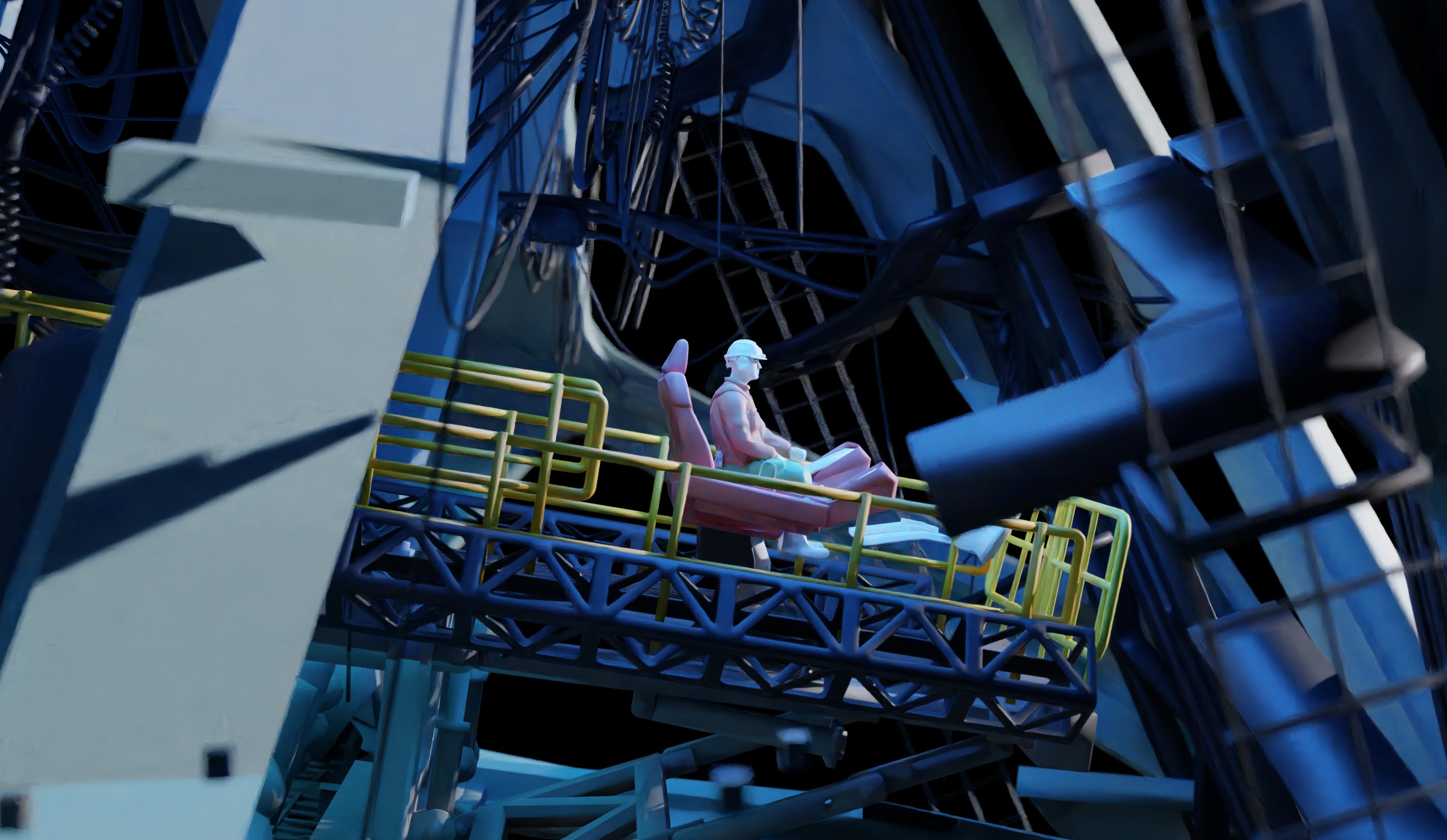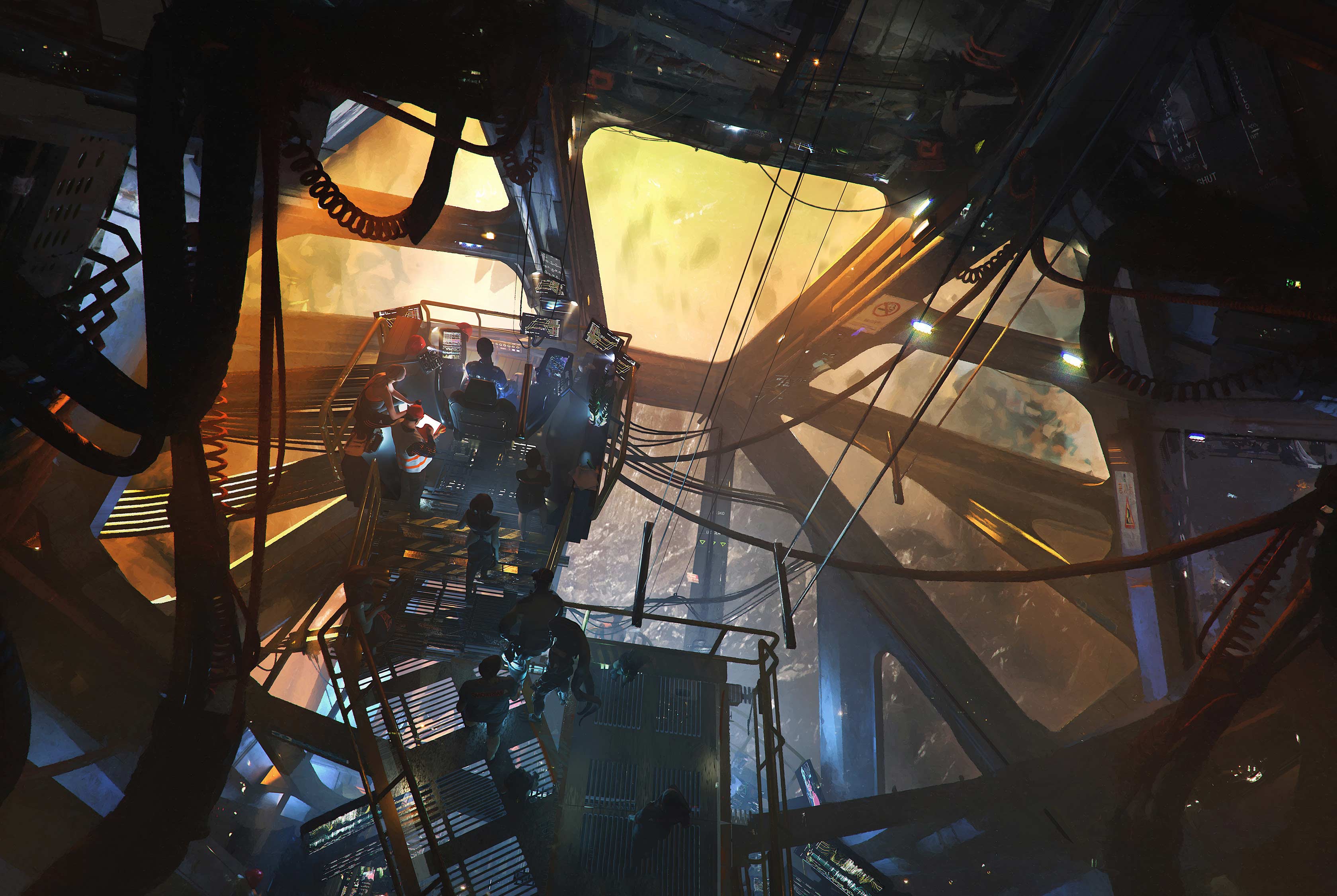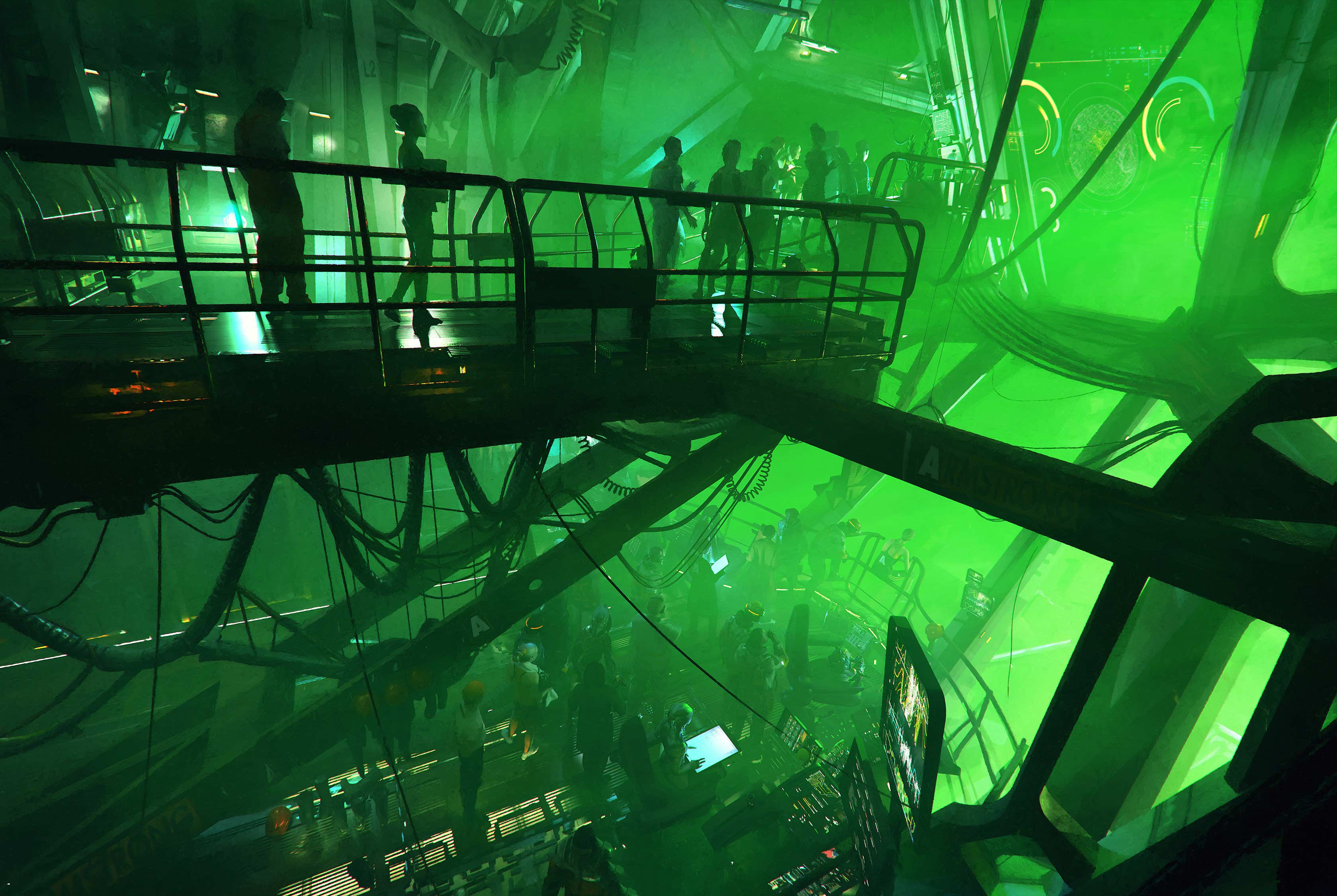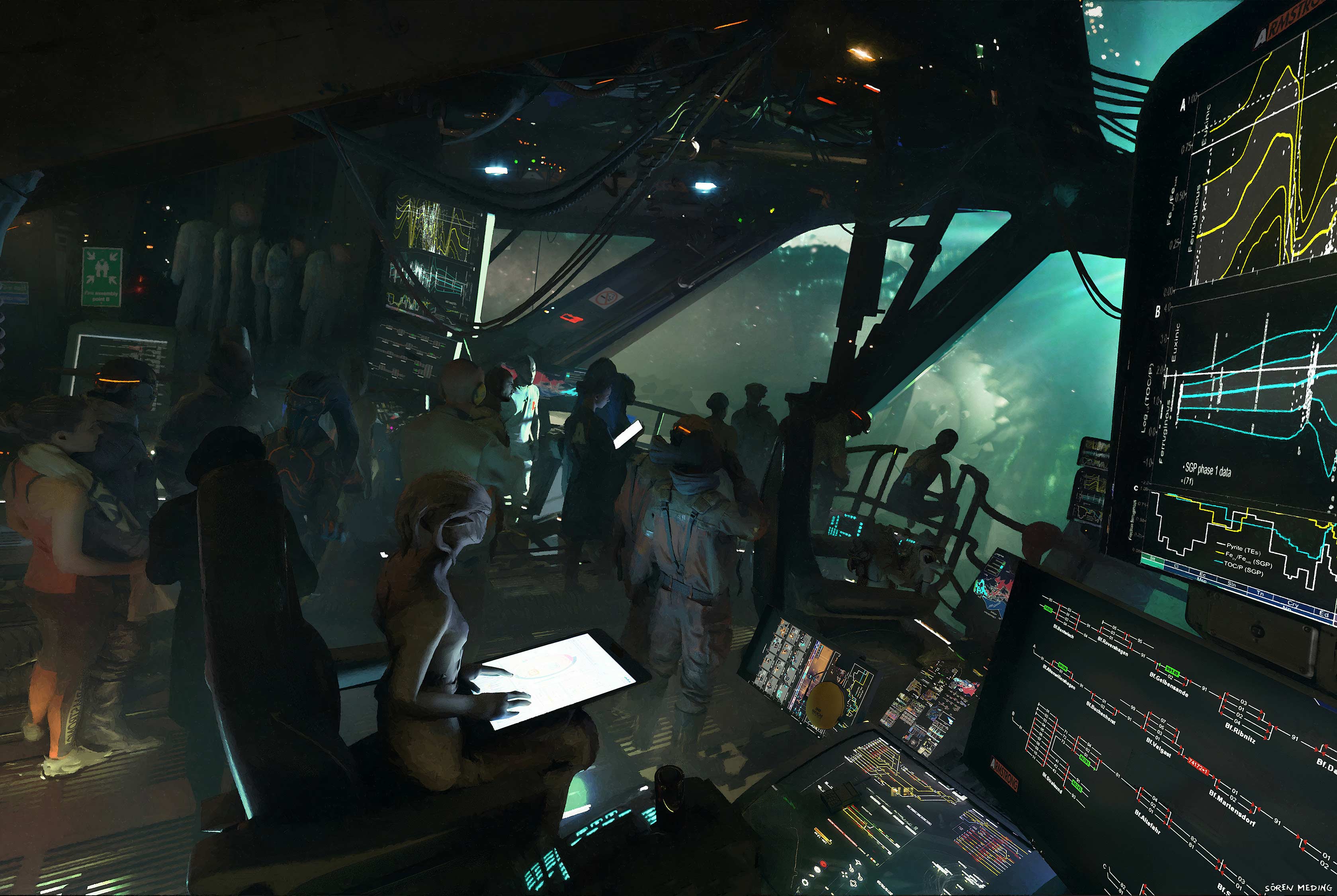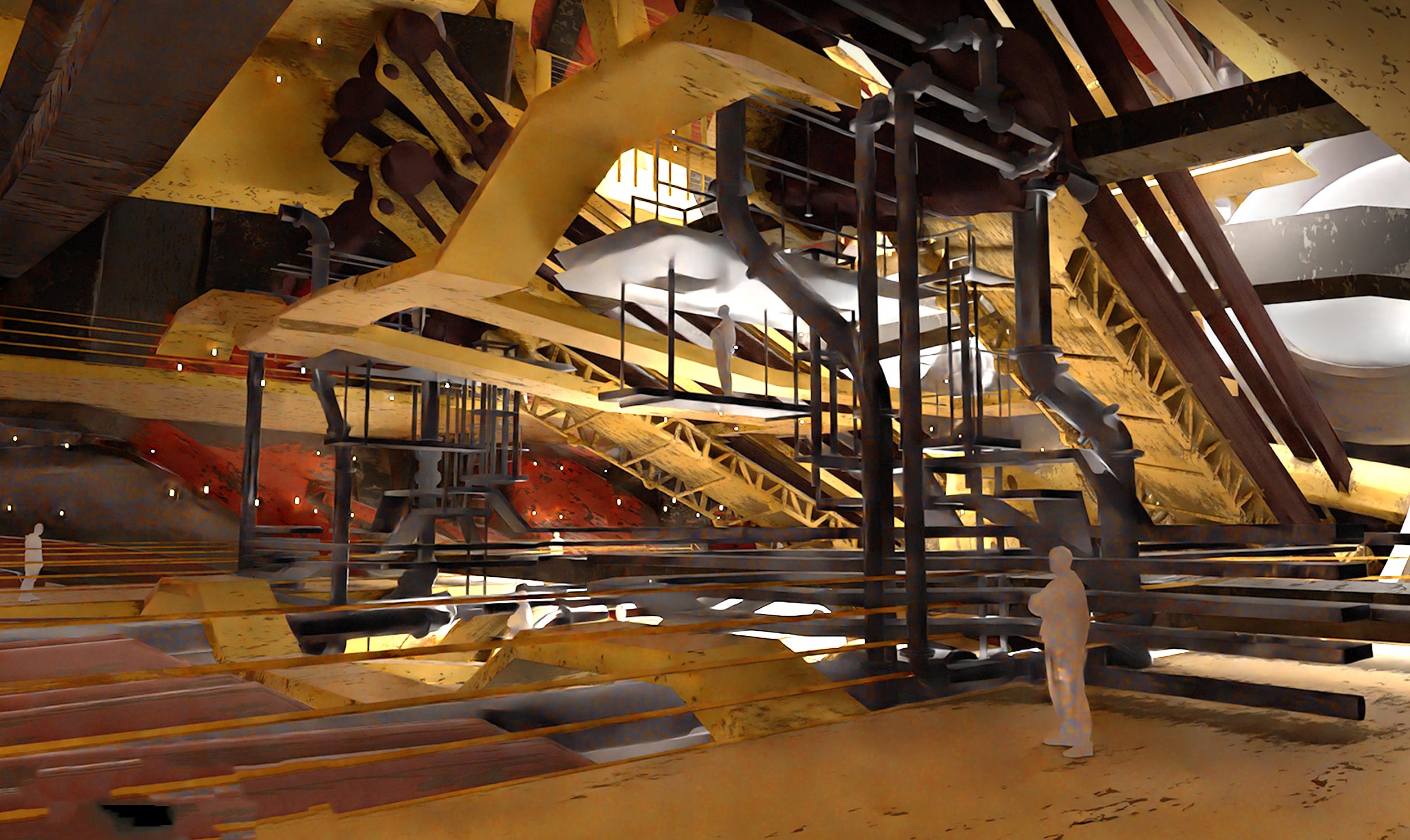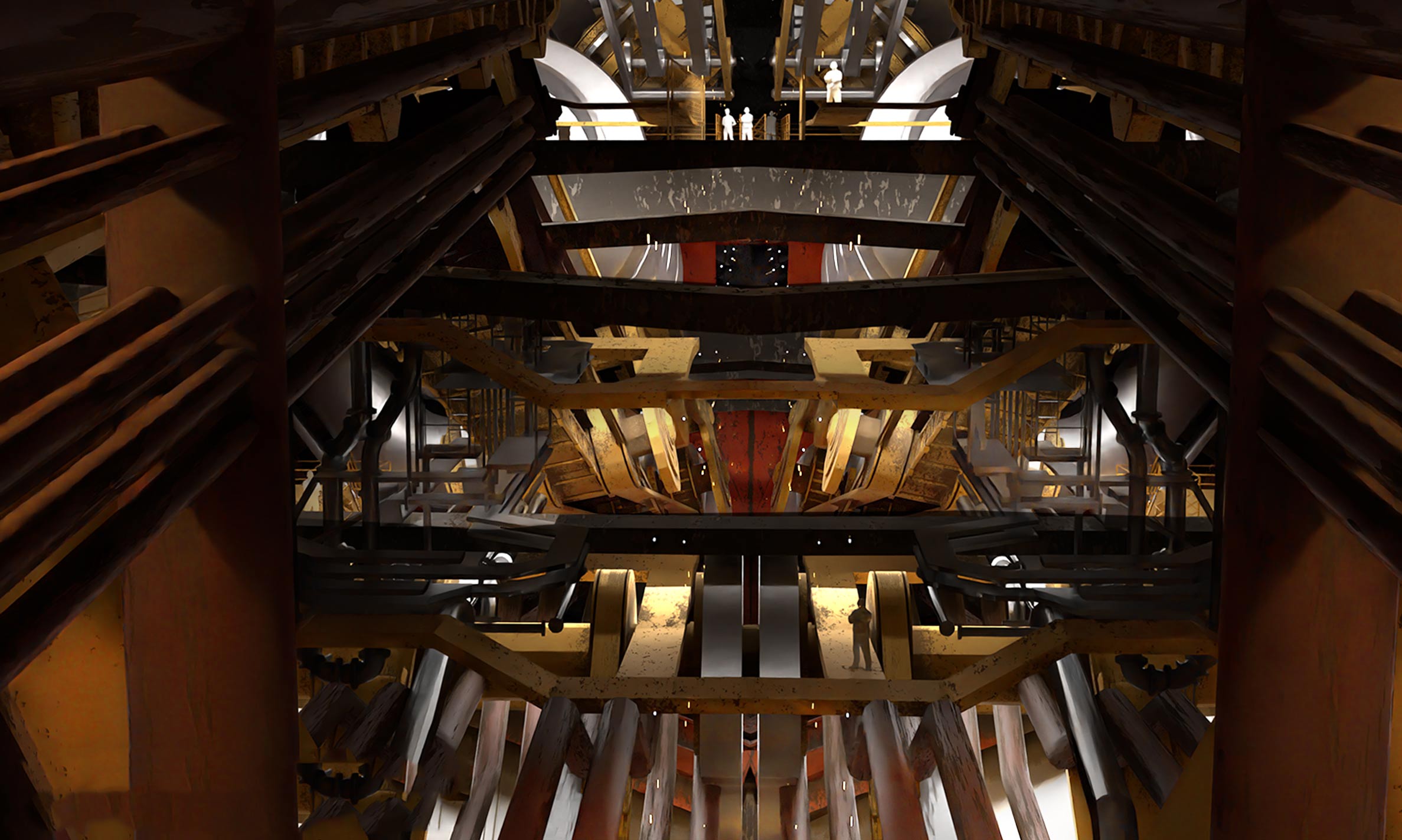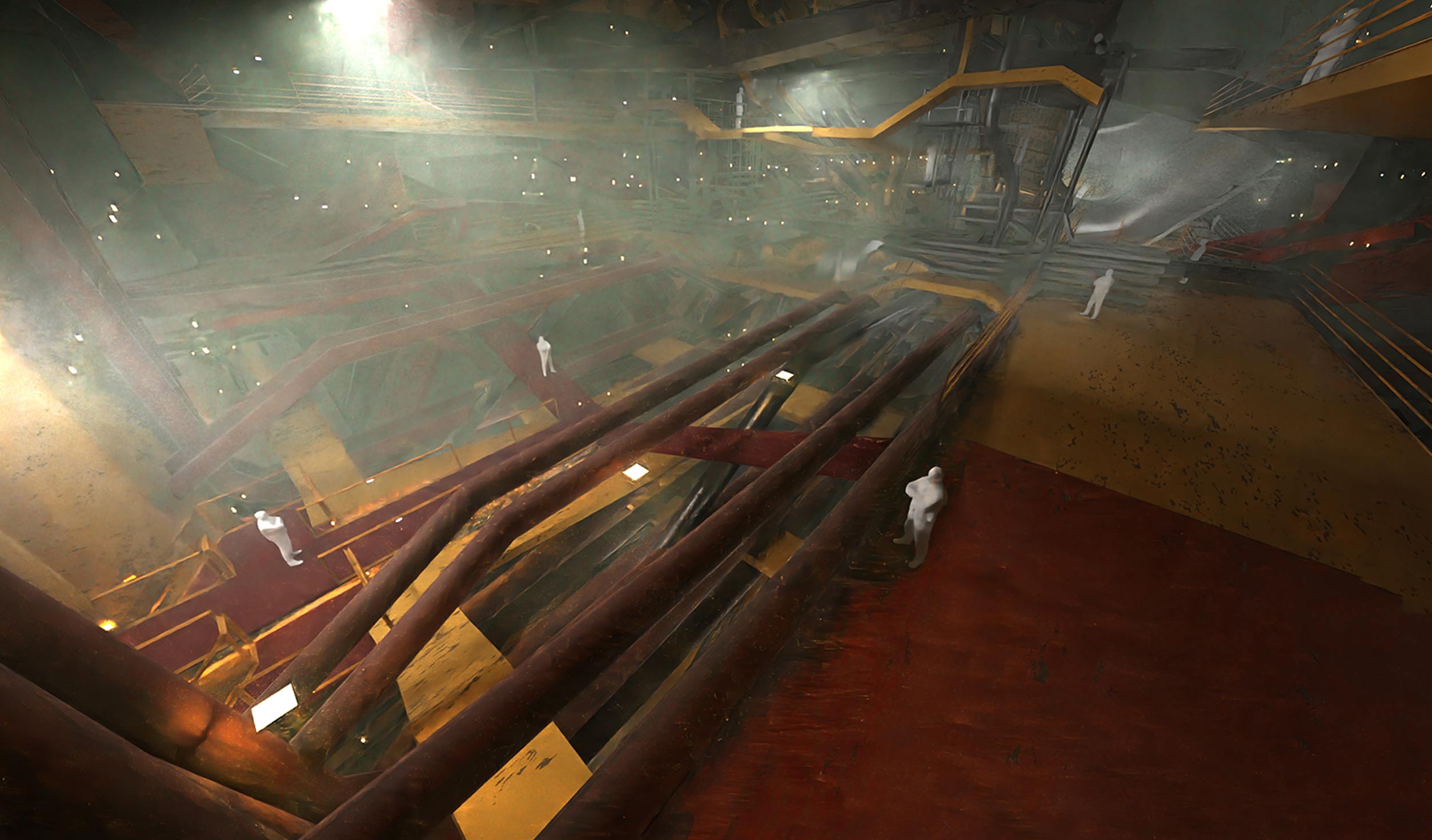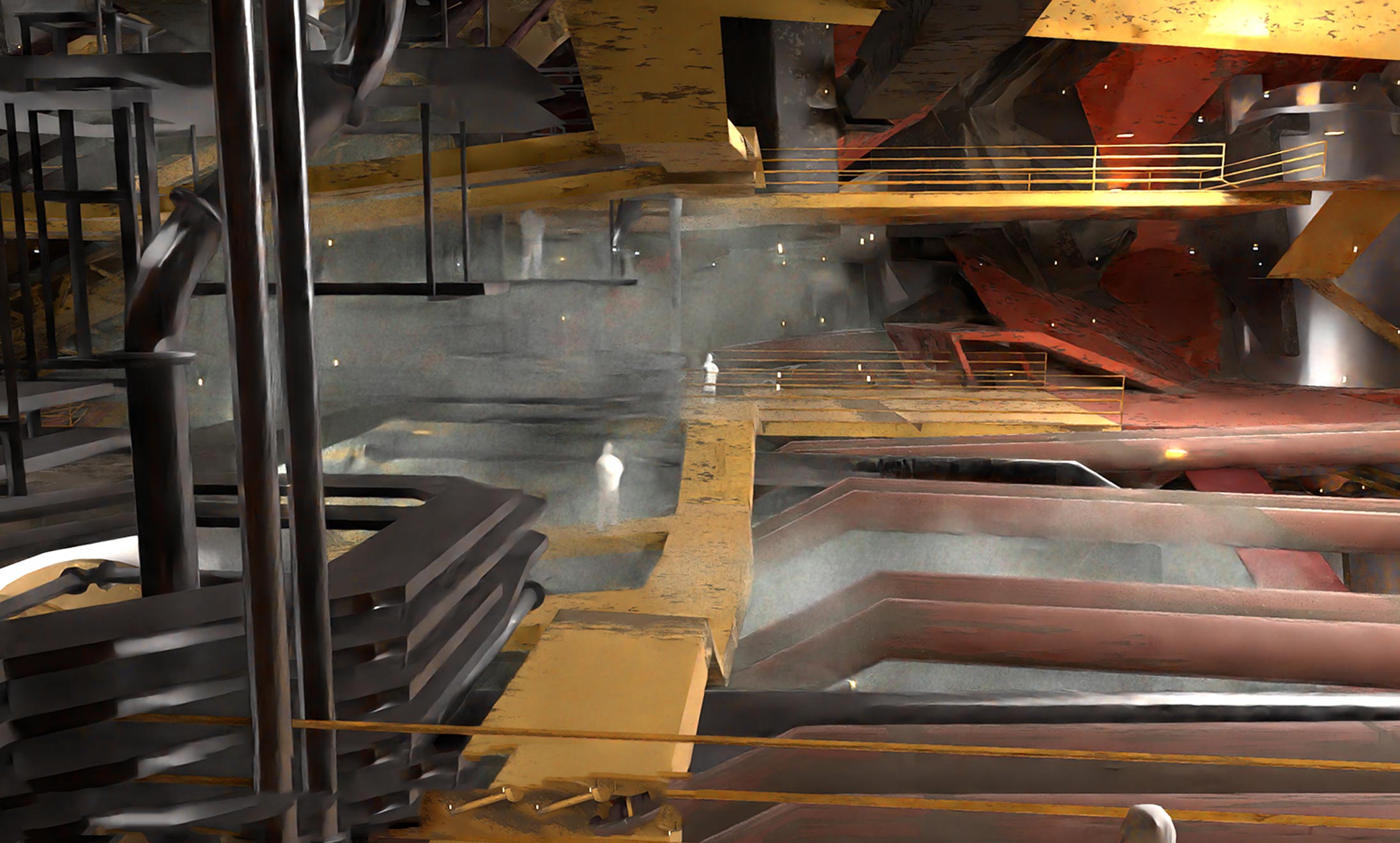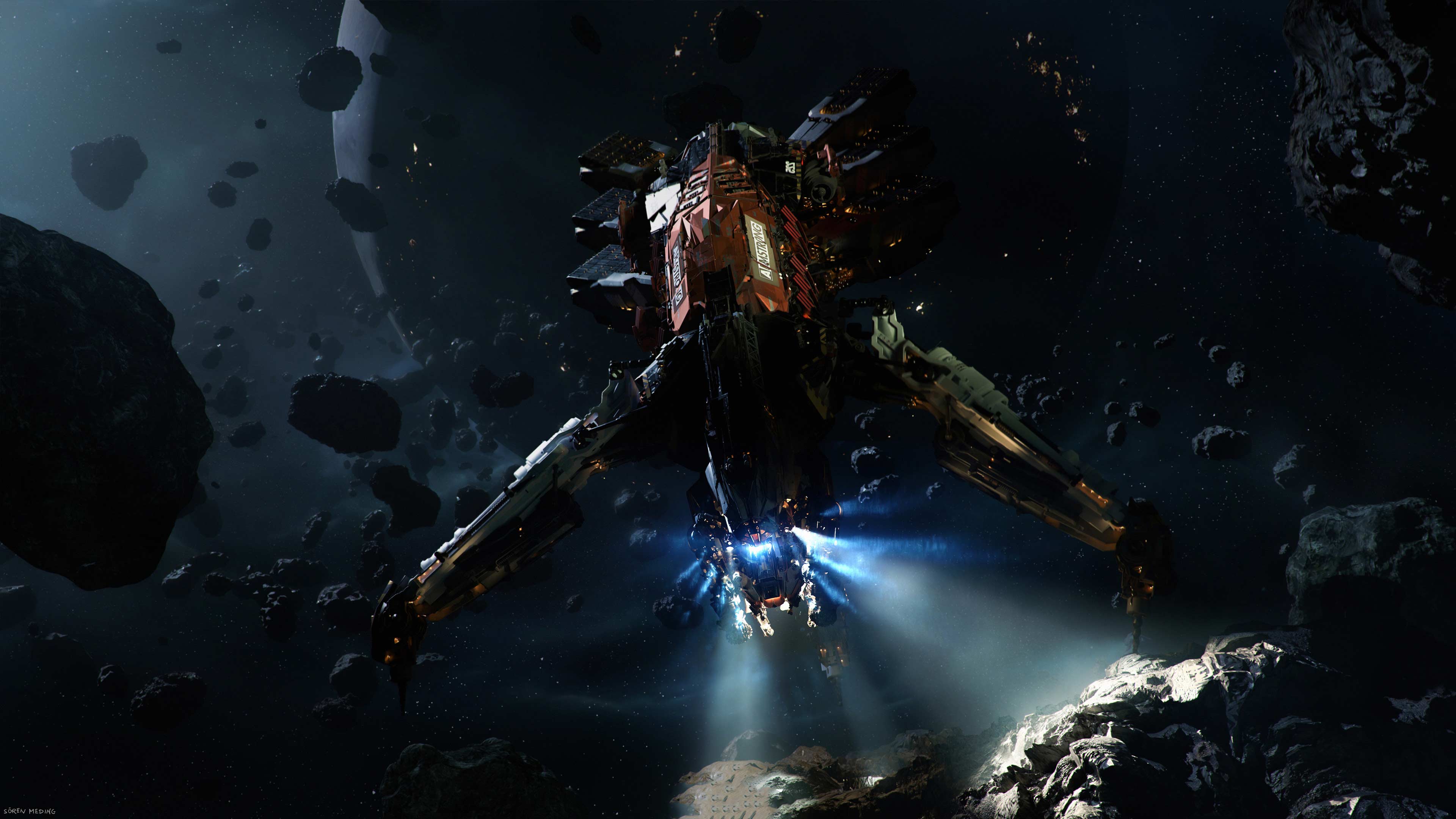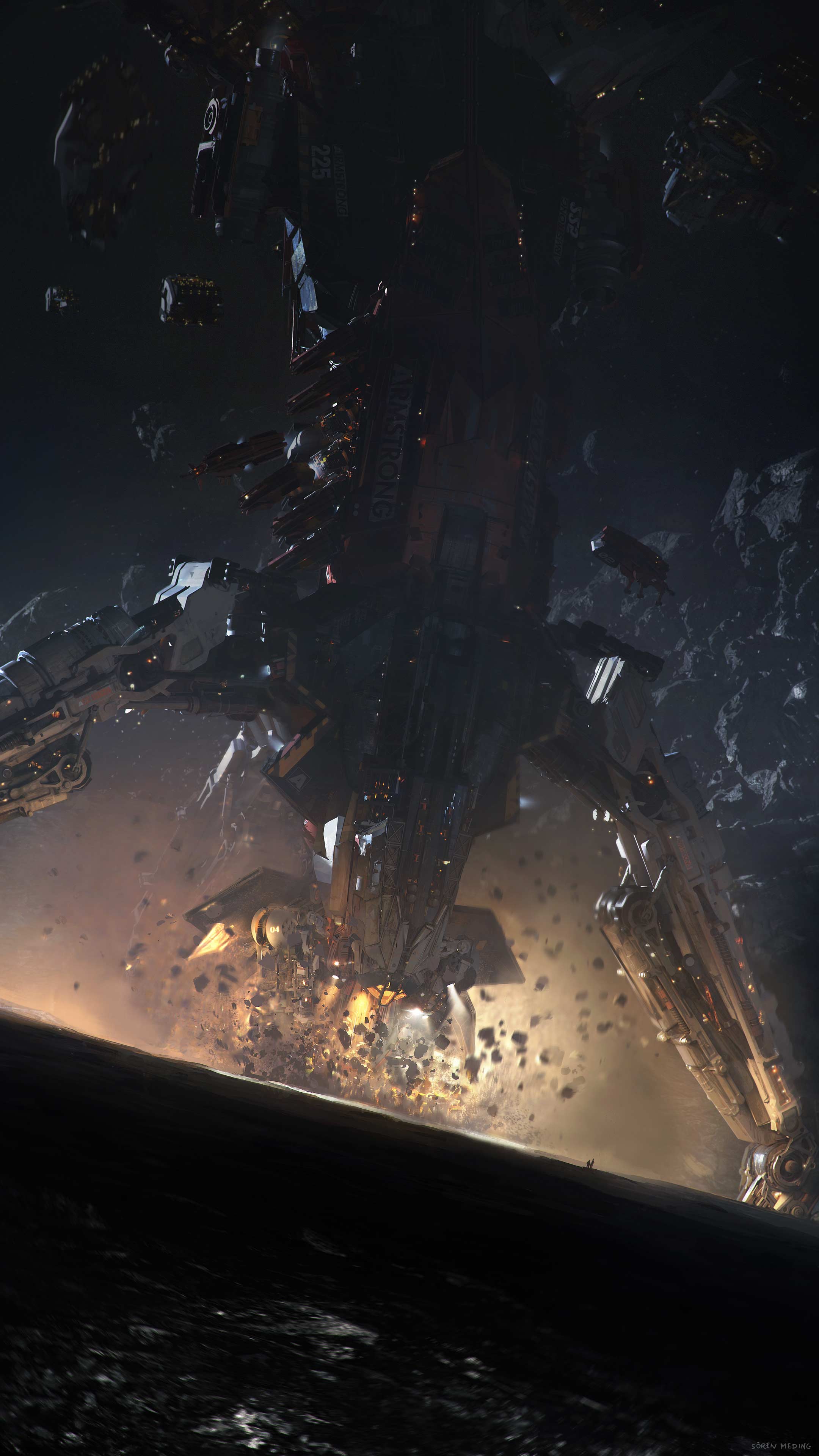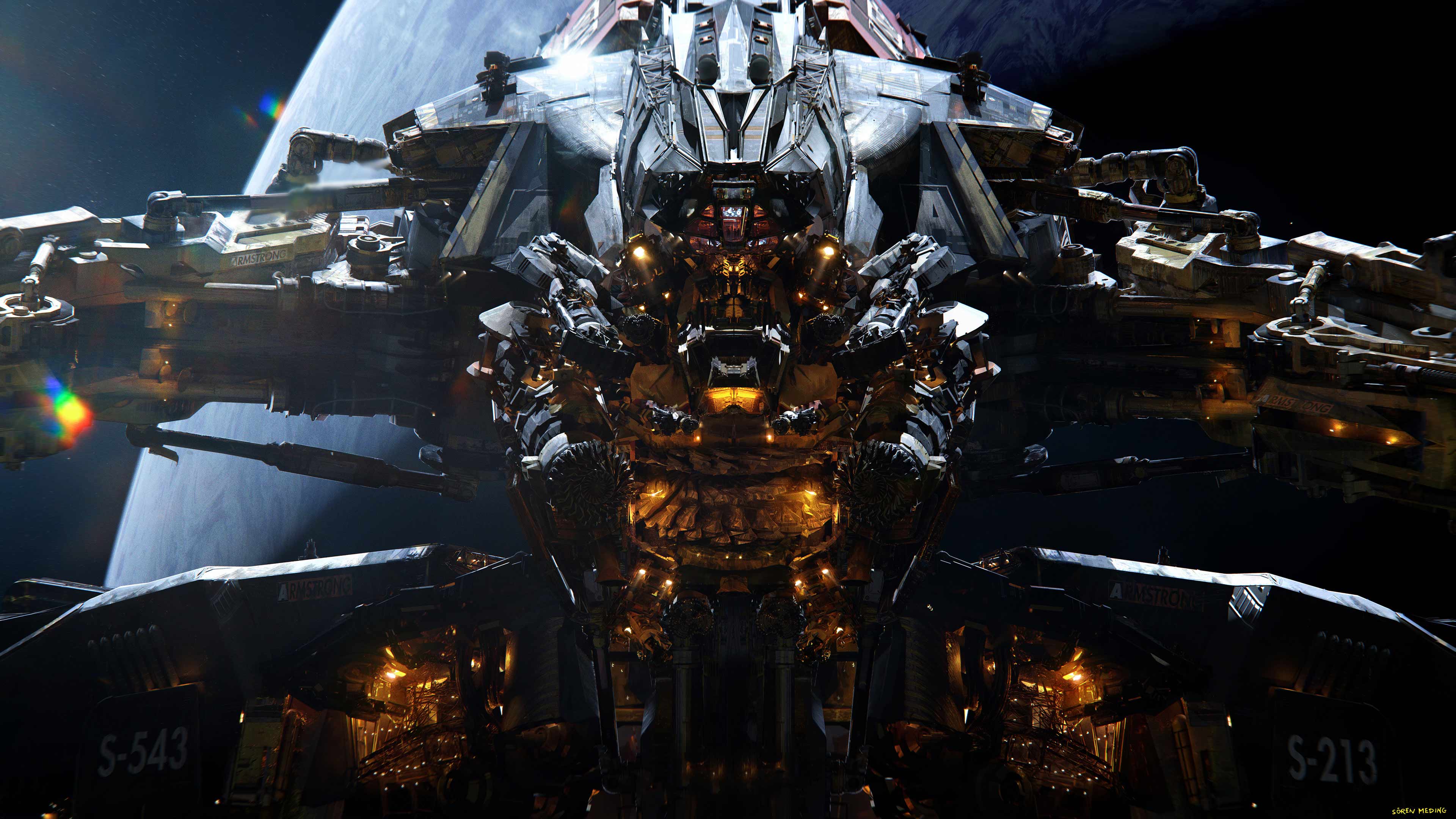
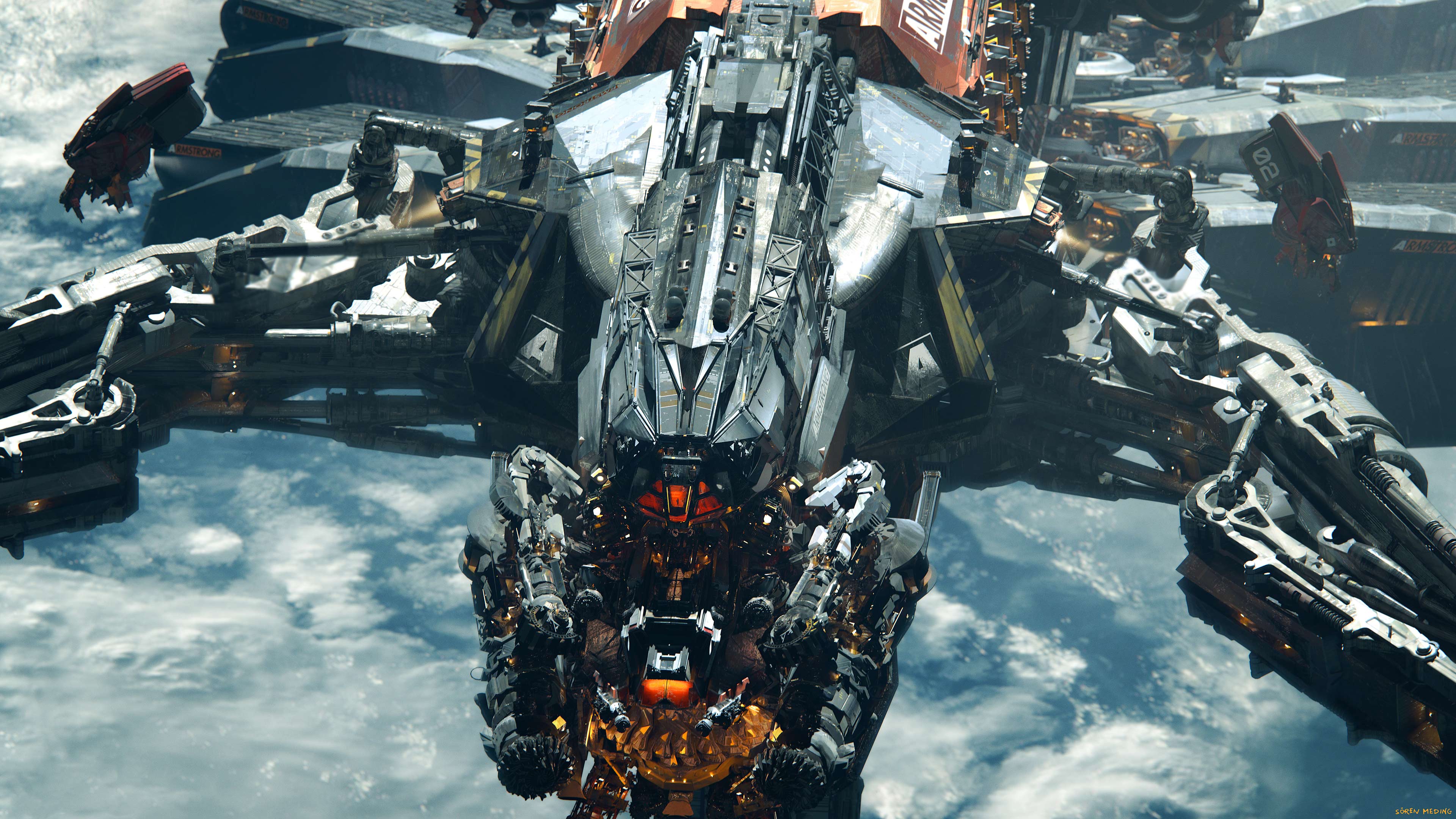
Before delving into the exhilarating design phase, I embarked on a comprehensive research journey, as is my customary practice. The primary focus was to ascertain the most effective method for the ship to harvest asteroids. We opted for the approach of latching and gripping, or more aptly put, breaking apart. Subsequently, I invested ample time in assembling a kitbash set, comprised of a select array of meshes. Transitioning into the realm of virtual reality, specifically with Gravity Sketch, yielded a range of outcomes, some of which are showcased below:
My chief inspiration for the entire vessel is encapsulated in this image (above) by Peter Ellenshaw. To me, it masterfully portrays a solitary captain navigating and steering their ship through the vastness of the open cosmos, employing substantial and deliberate levers, all while bearing the responsibility for the crew (depicted further below in the image). A sense of isolation and solitude akin to a sea captain at helm is evoked. I later infused this sentiment into the interior layout of the bridge.
Mood shots
Once the initial inquiries were resolved, the production of the first atmospheric shots became possible. One method of extraction stood out: I was captivated by the vision of an immensely powerful, muscle-bound vessel with bulging upper arms (Armstrong), utilizing its strength to fracture the asteroid, while smaller tools transport the pulverized material into the ship’s interior for further processing, packaging, and eventual dispatch.
3D Engine + Walkable UE5 Demo
In the provided Blender video, you’ll observe the ship’s scale – it’s truly colossal, comparable to some shooter maps. To emphasize this grandeur, I’ve also developed a playable UE5 demo, offering glimpses of its magnitude. It was only available internally.
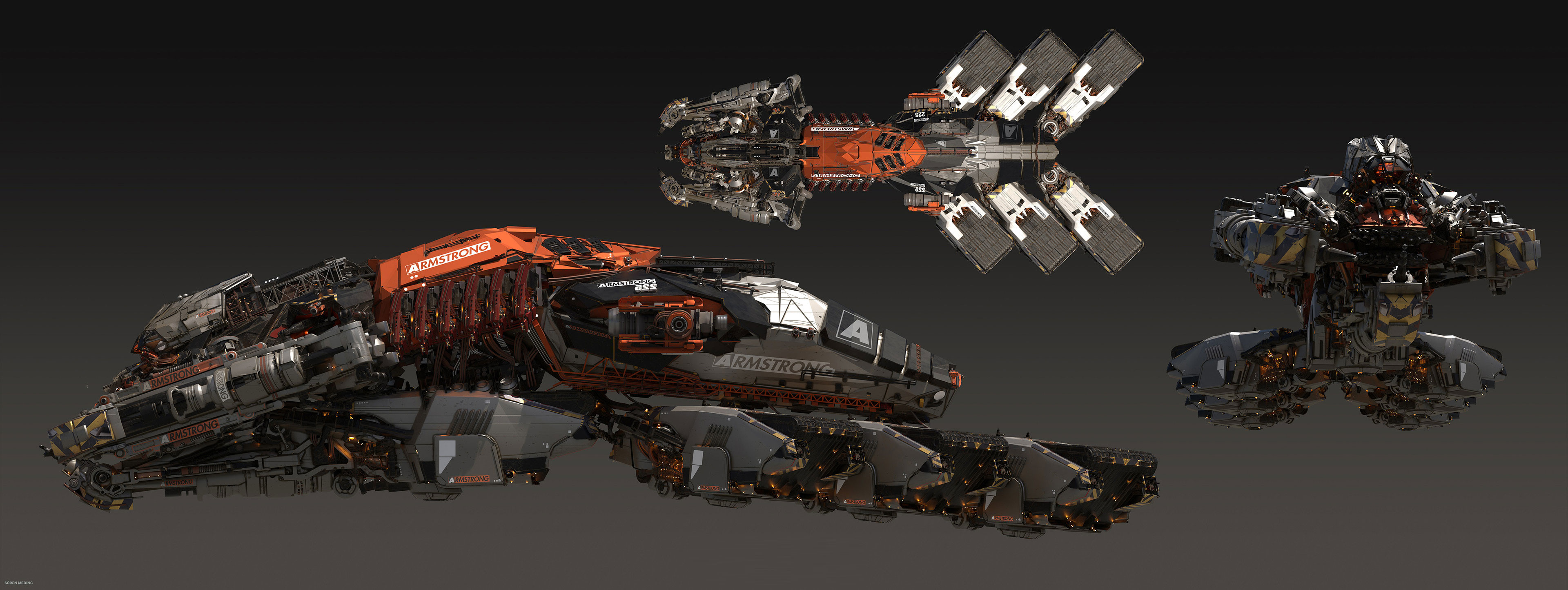
Discovering the Right Image to Tell the Story
The ship is constructed. It’s finally time for us to witness the ship in action. This phase has been immensely enjoyable, offering countless possibilities.
Interior Designs
We’ve accomplished a lot already. It’s time to turn our attention to the ship’s interior. Fortunately, during the ship’s construction, I paid careful consideration to a meaningful interior. A few adjustments and the initial rough concepts for the bridge were in place:
How many cables are permissible? How much industry should be visible? How much sci-fi can be incorporated? In the end, I was certain: everything should feel akin to being on an oil drilling platform.
Of importance was the isolation of the captain within the bridge (inspired by Peter Ellenshaw’s painting above).
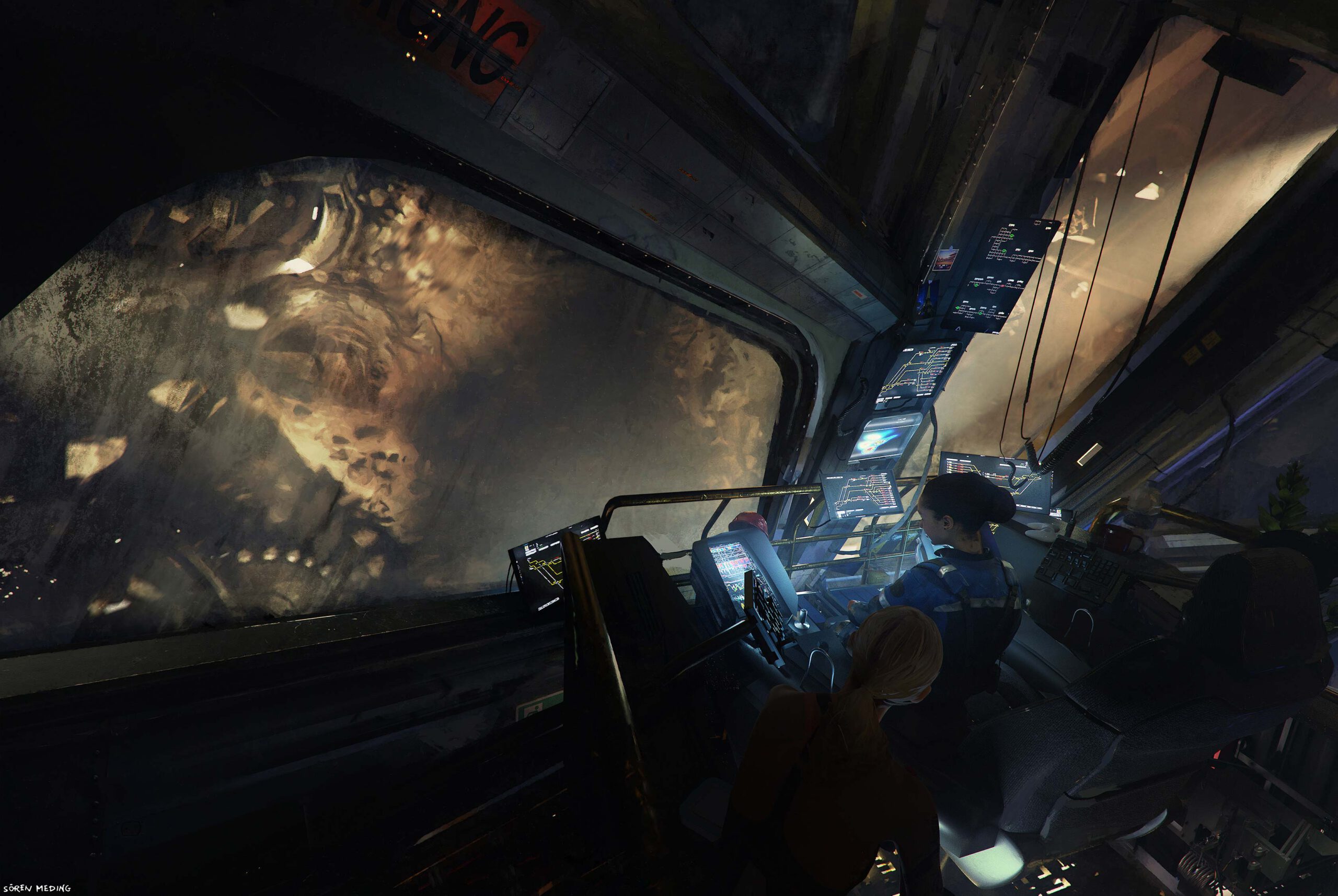
It was crucial for me to showcase the crew’s personal belongings and possessions. Sci-fi designs often exude sleekness and polish. This ship should appear as if work takes place here – reflecting the fact that people and aliens spend months, or even years, on board. Personal mugs, plants, photos evoking a sense of home…
Engine Room
The final task was the interior of the machinery space. Not meticulously detailed, just a rough approximation. I wanted to revisit the theme of an oil drilling tower. Many pipes, cables, warning signs, signal colors. Perhaps in the future, there might be modular and flexible conveyor belts, sorting incoming dust or rocks directly into appropriate containers.
